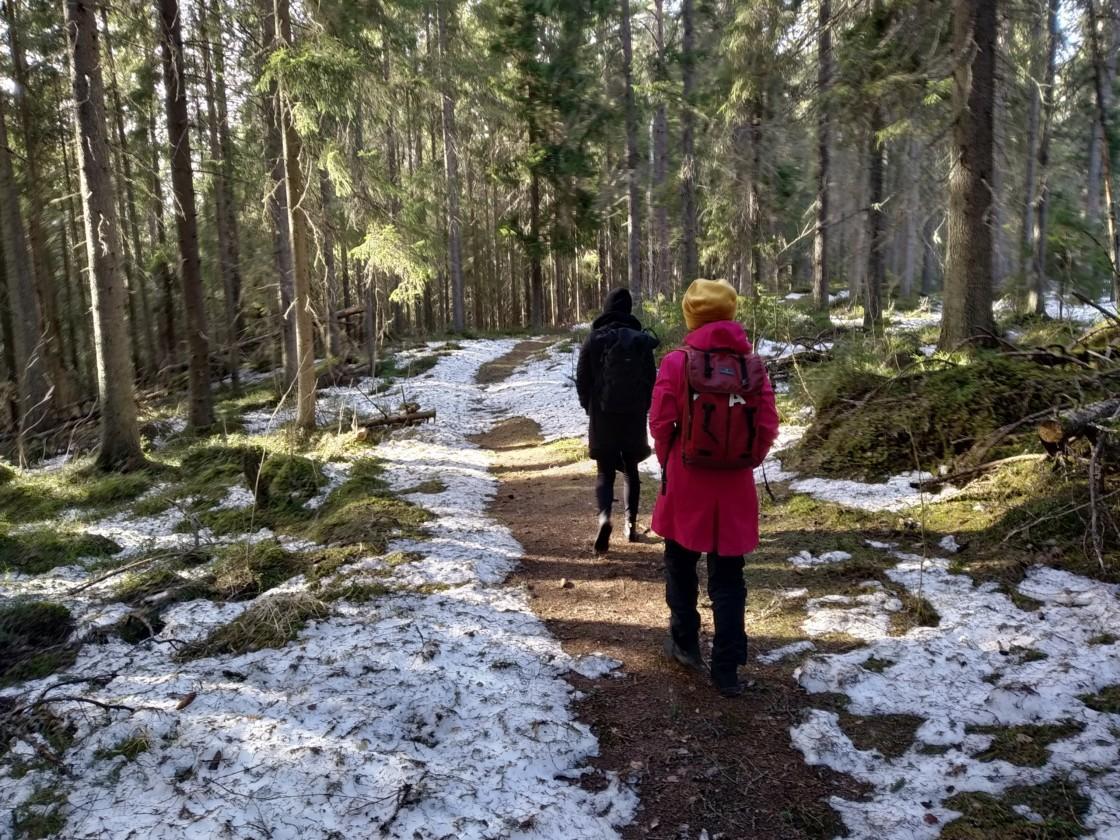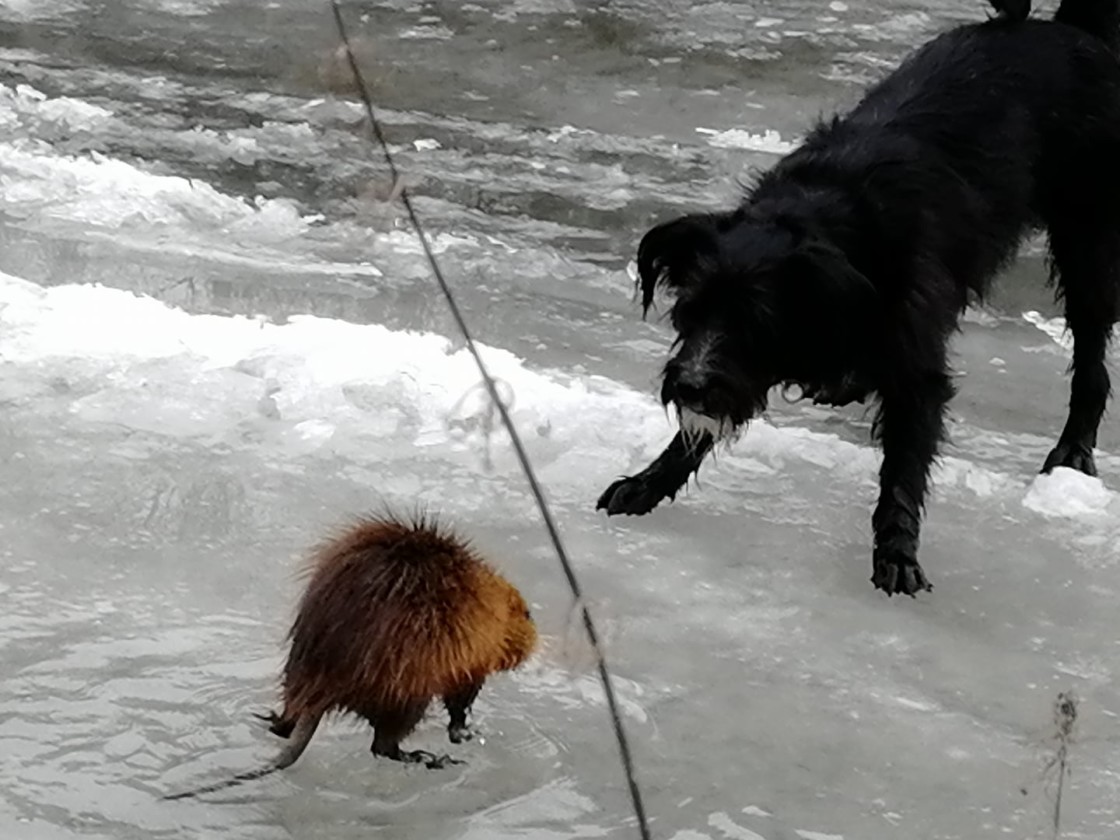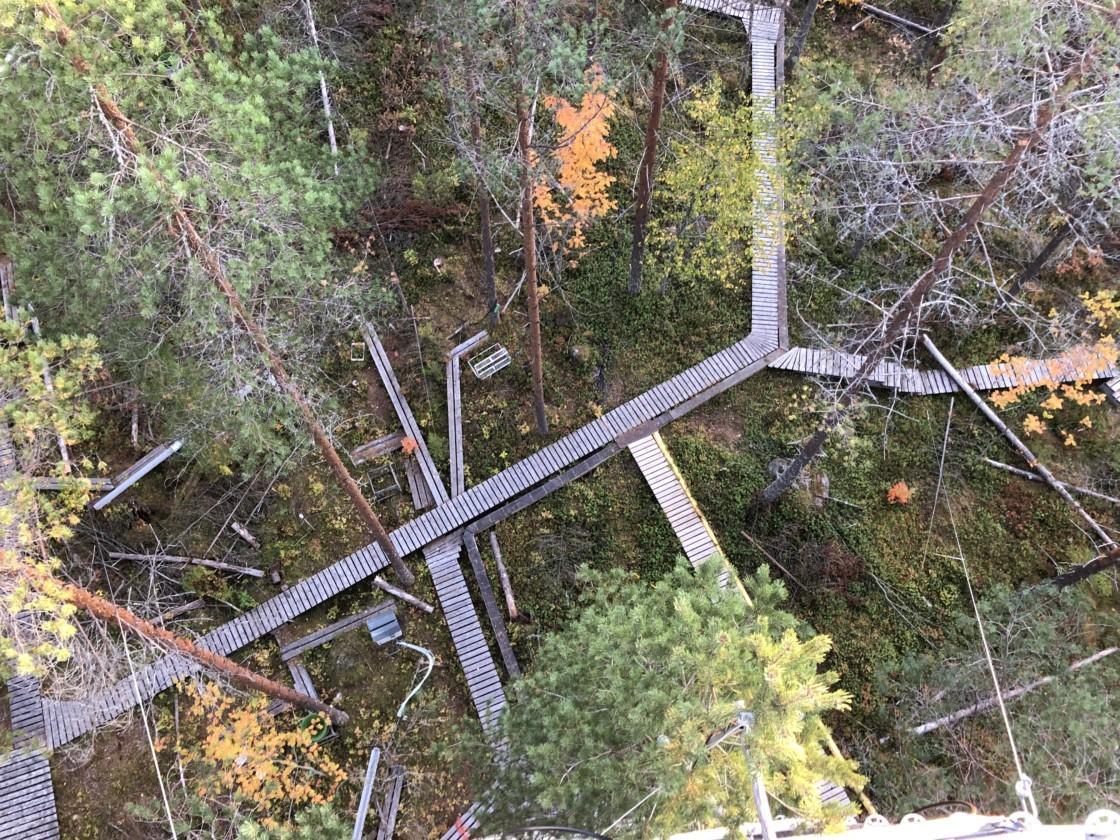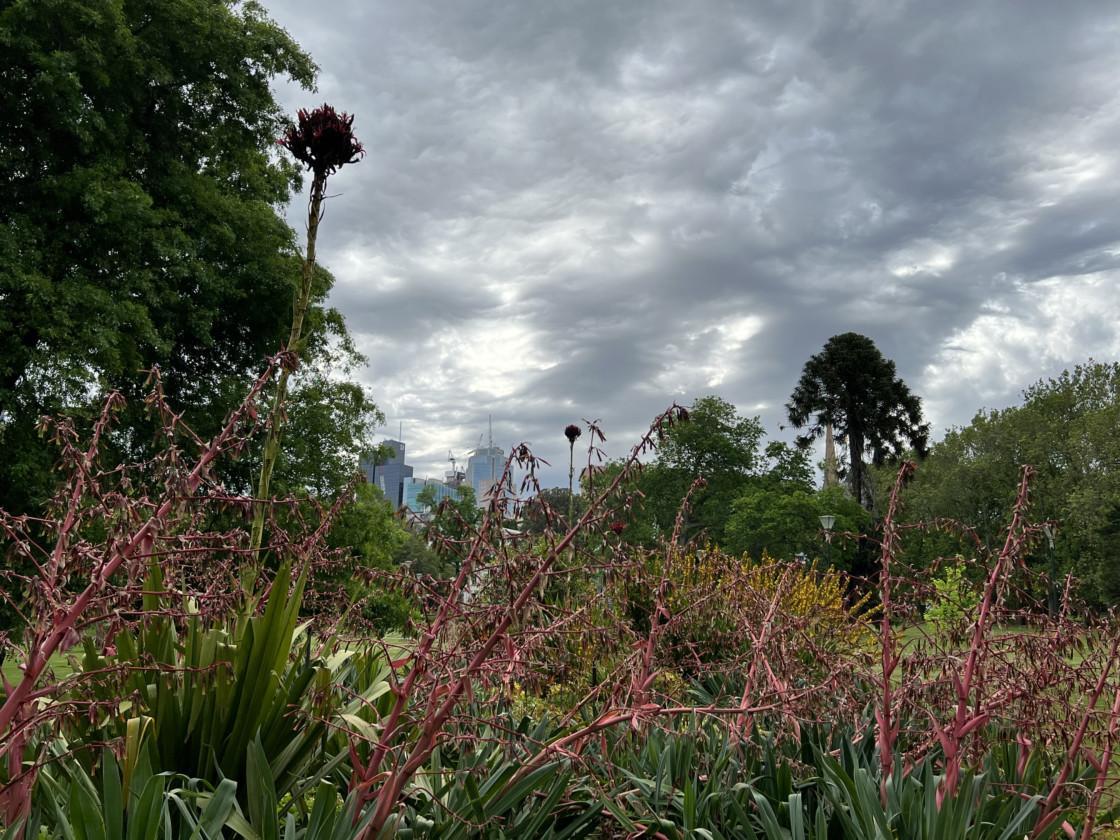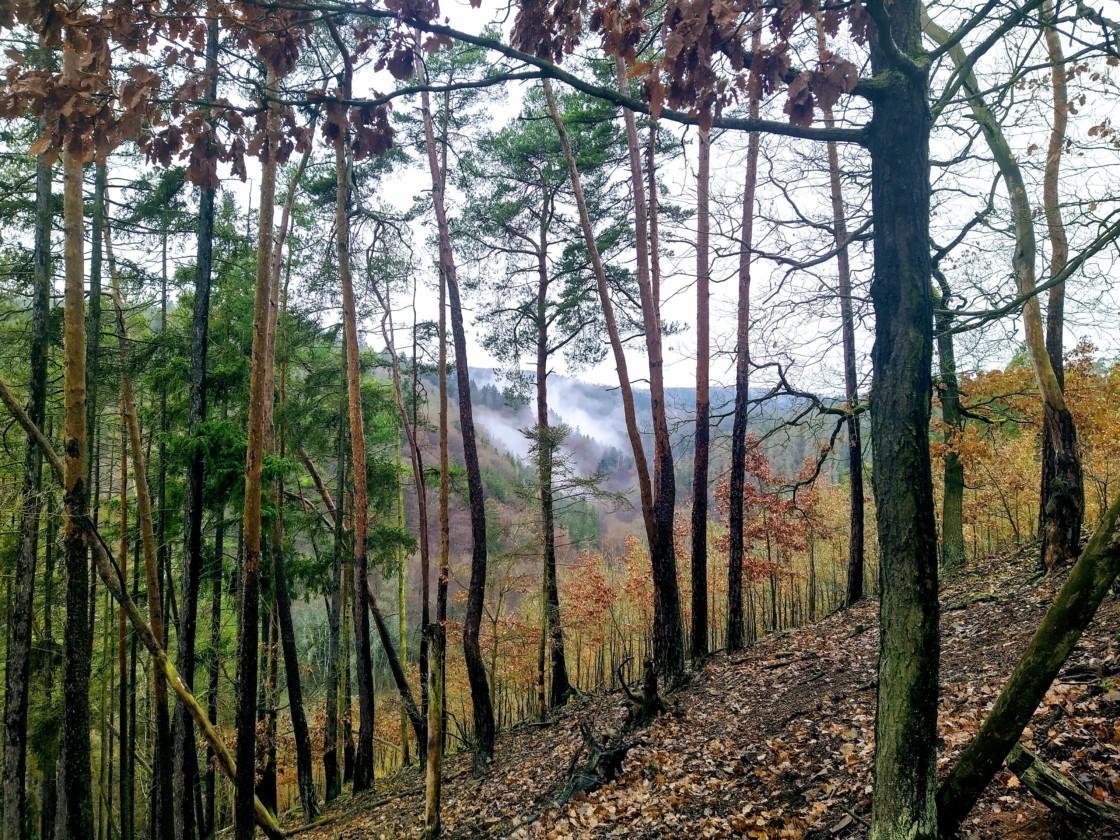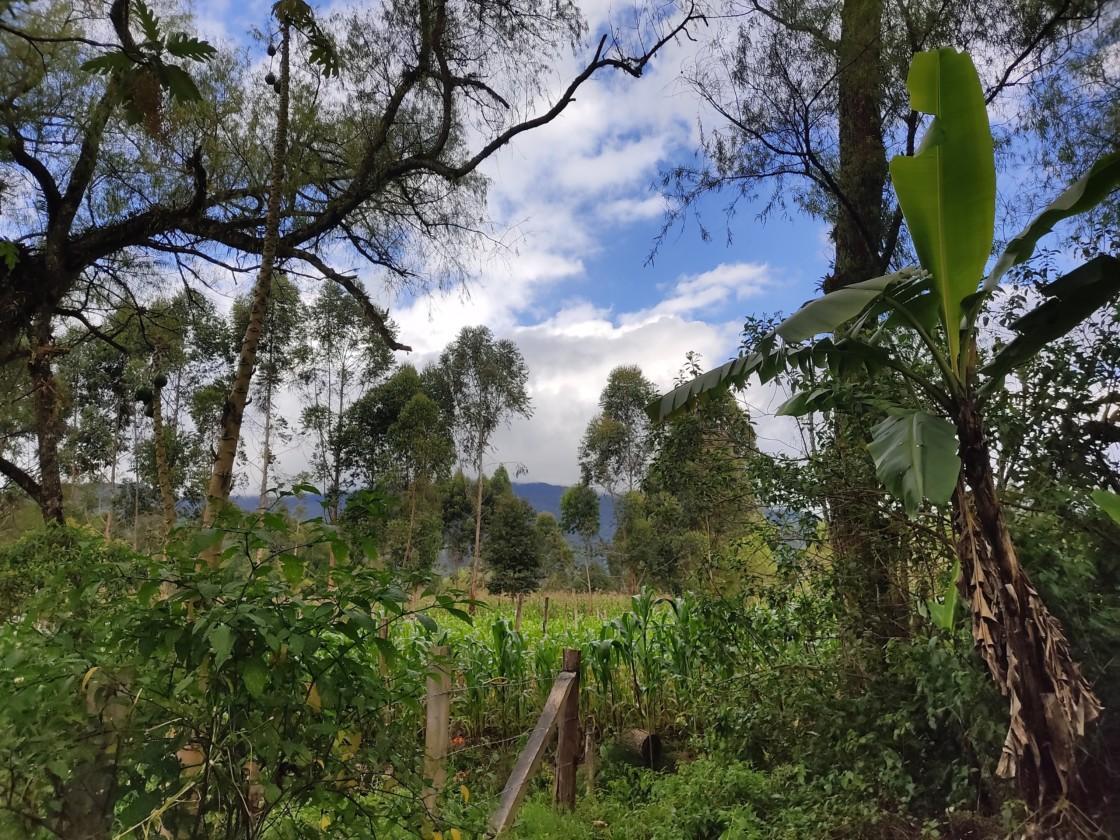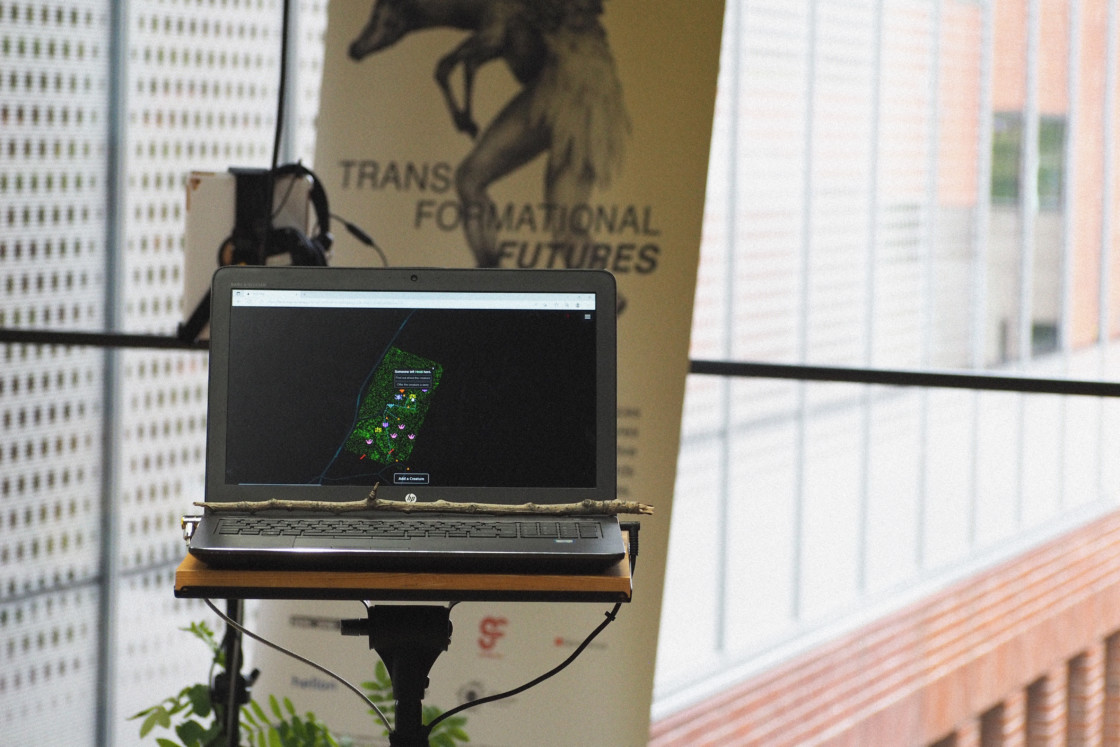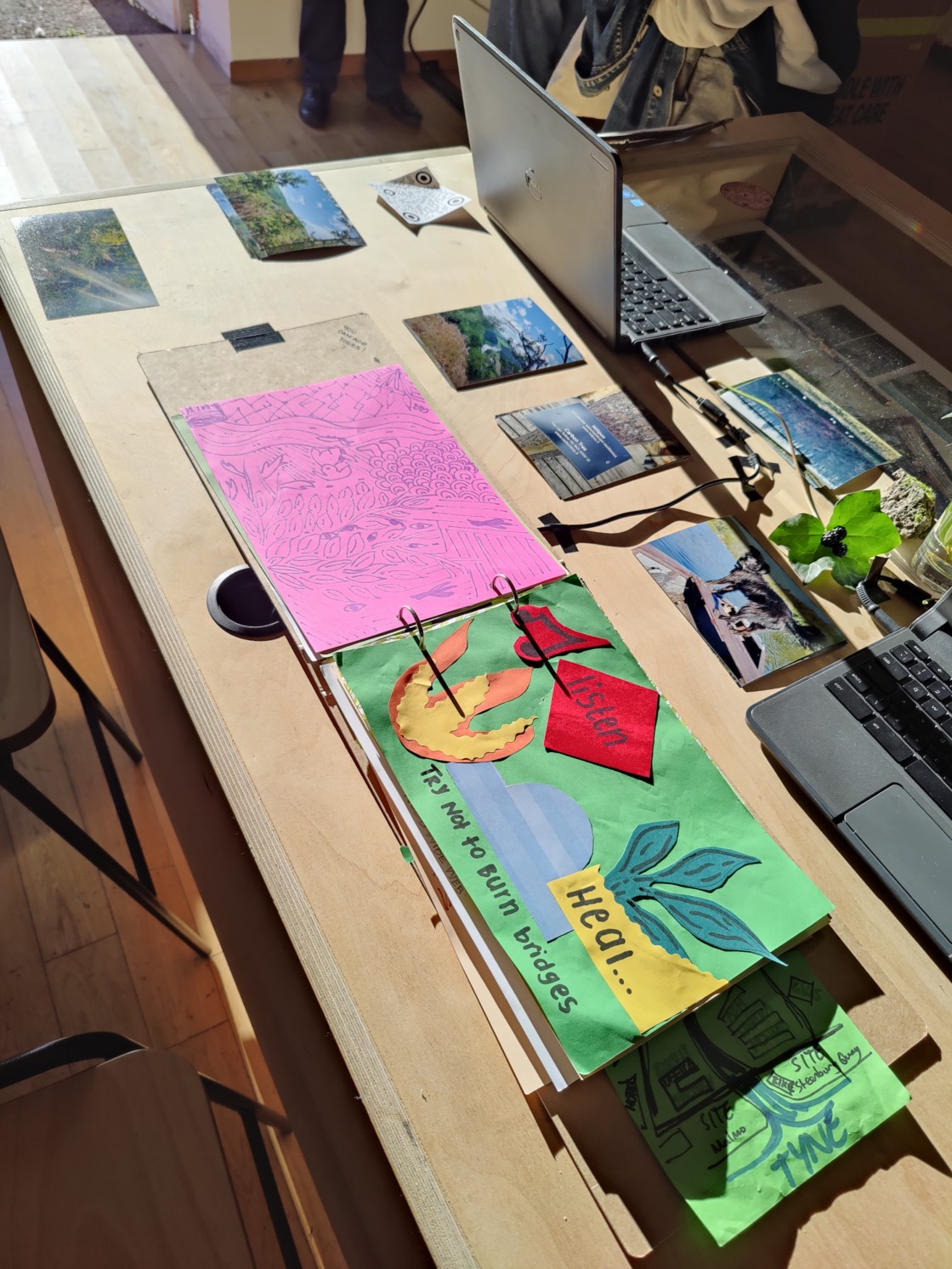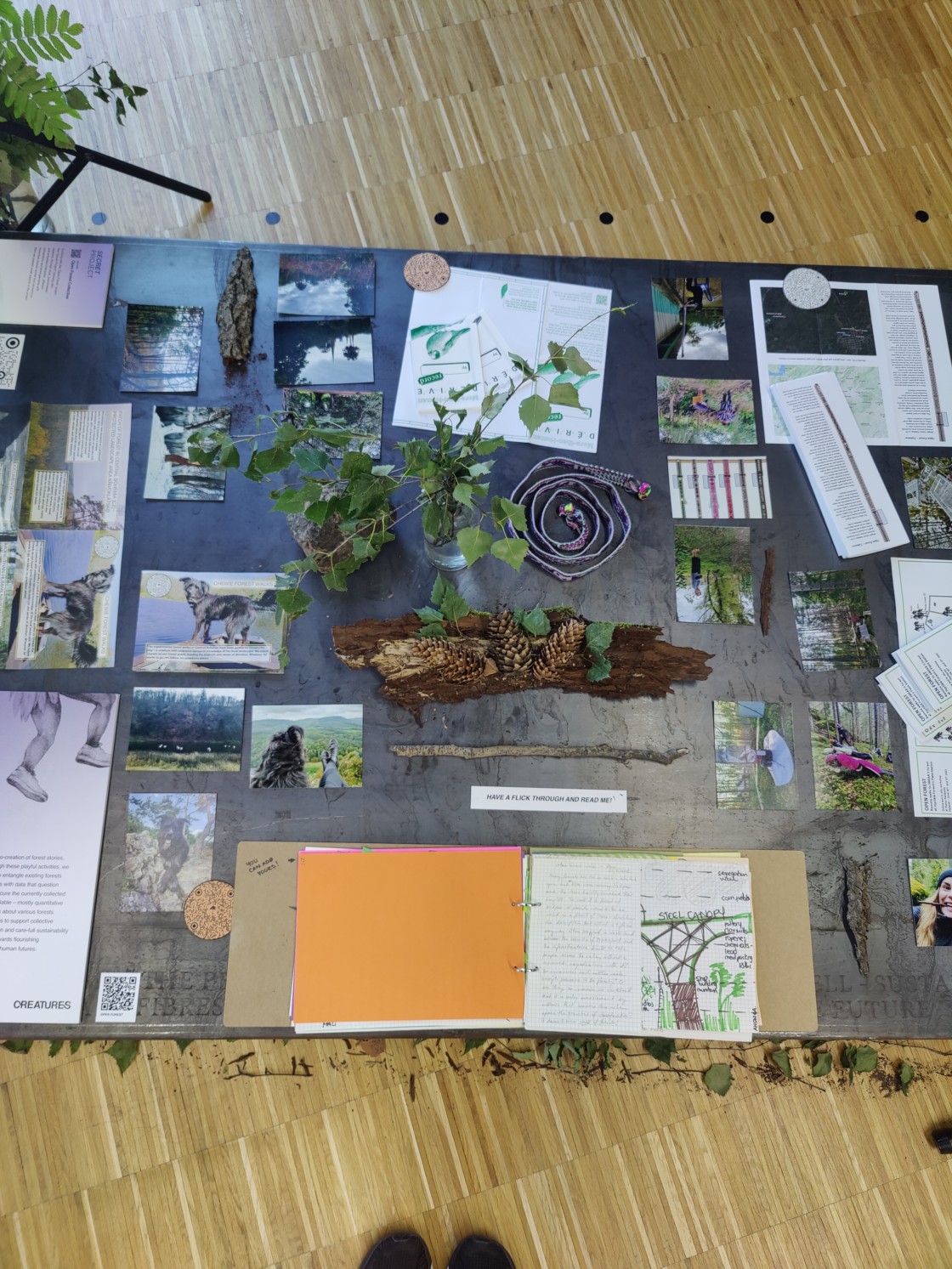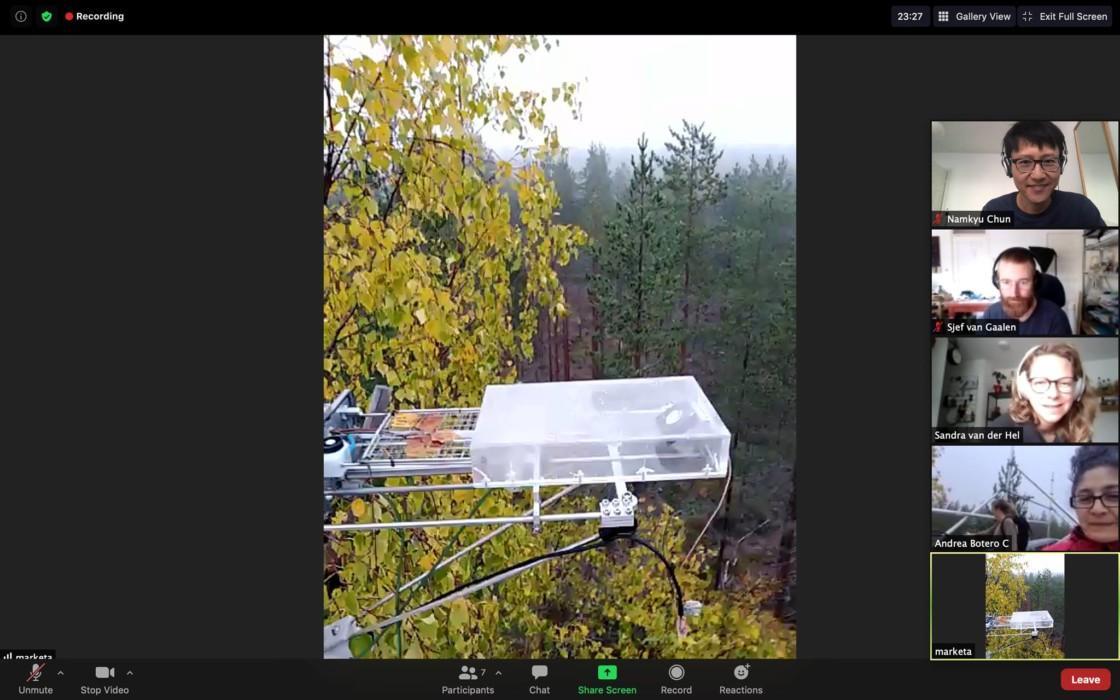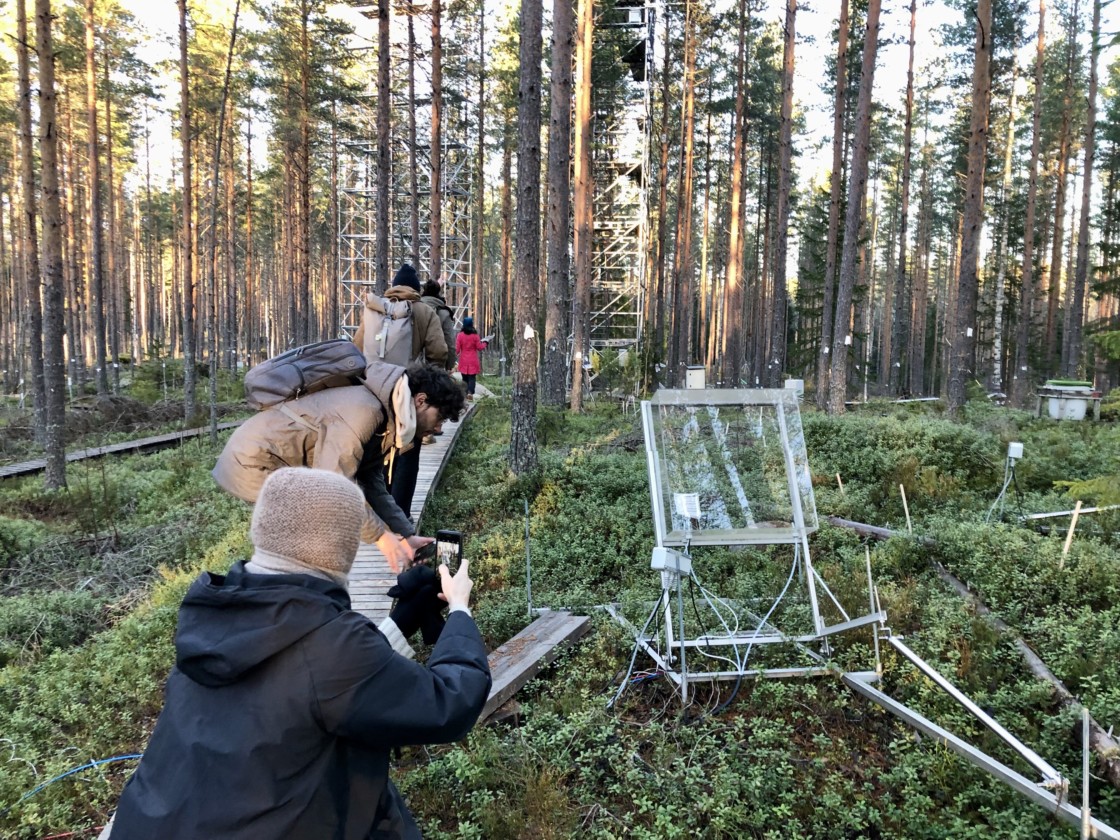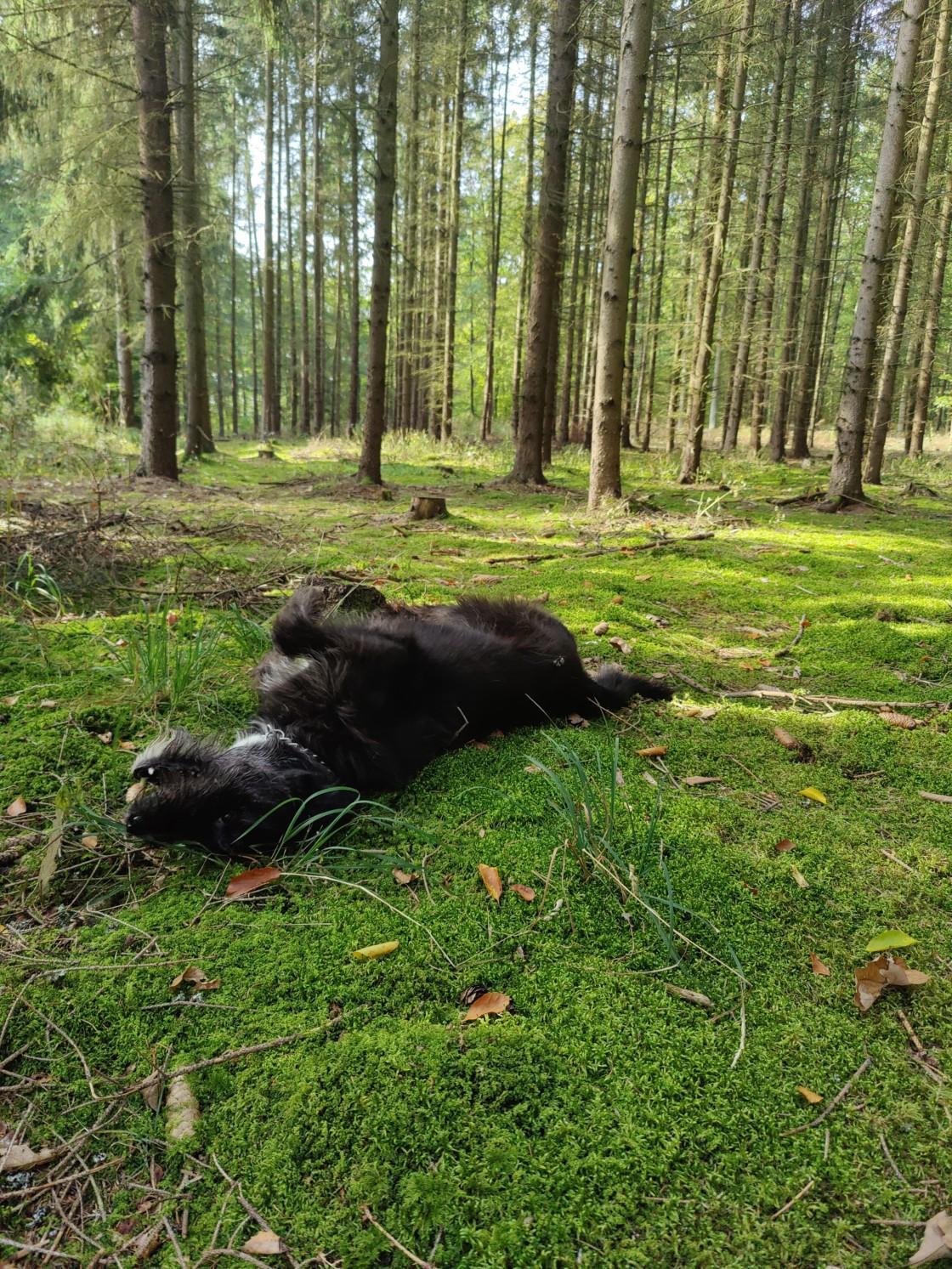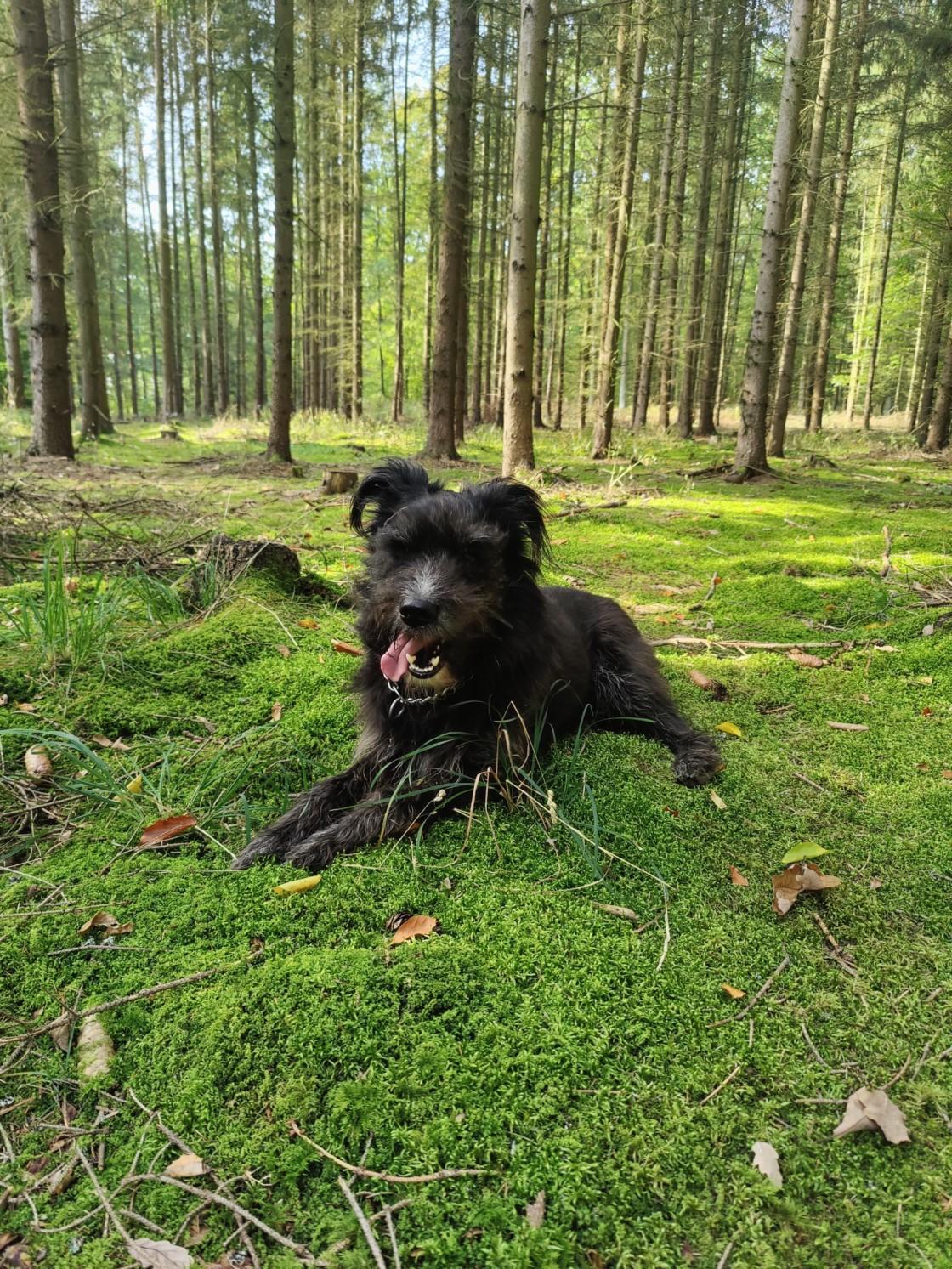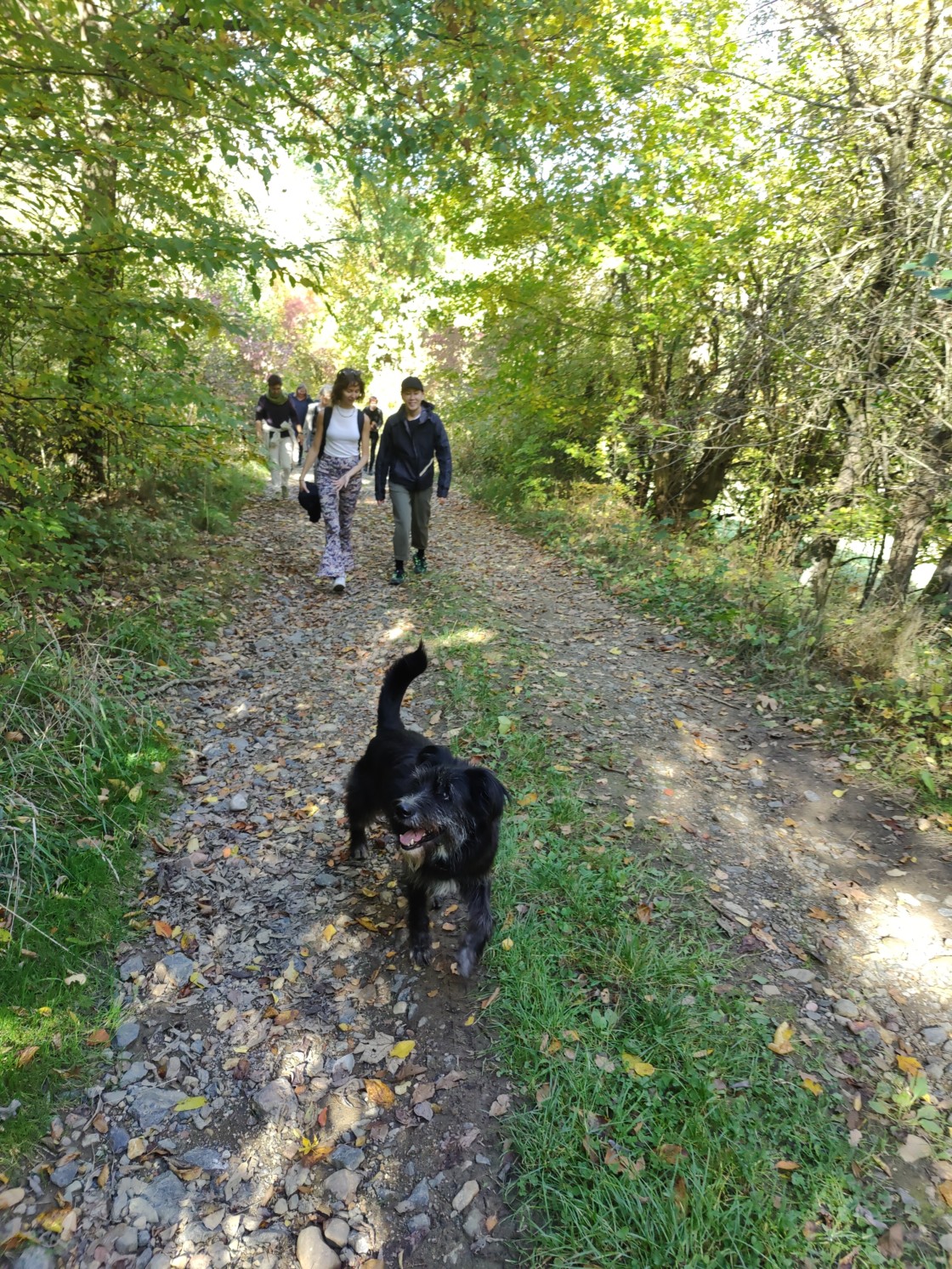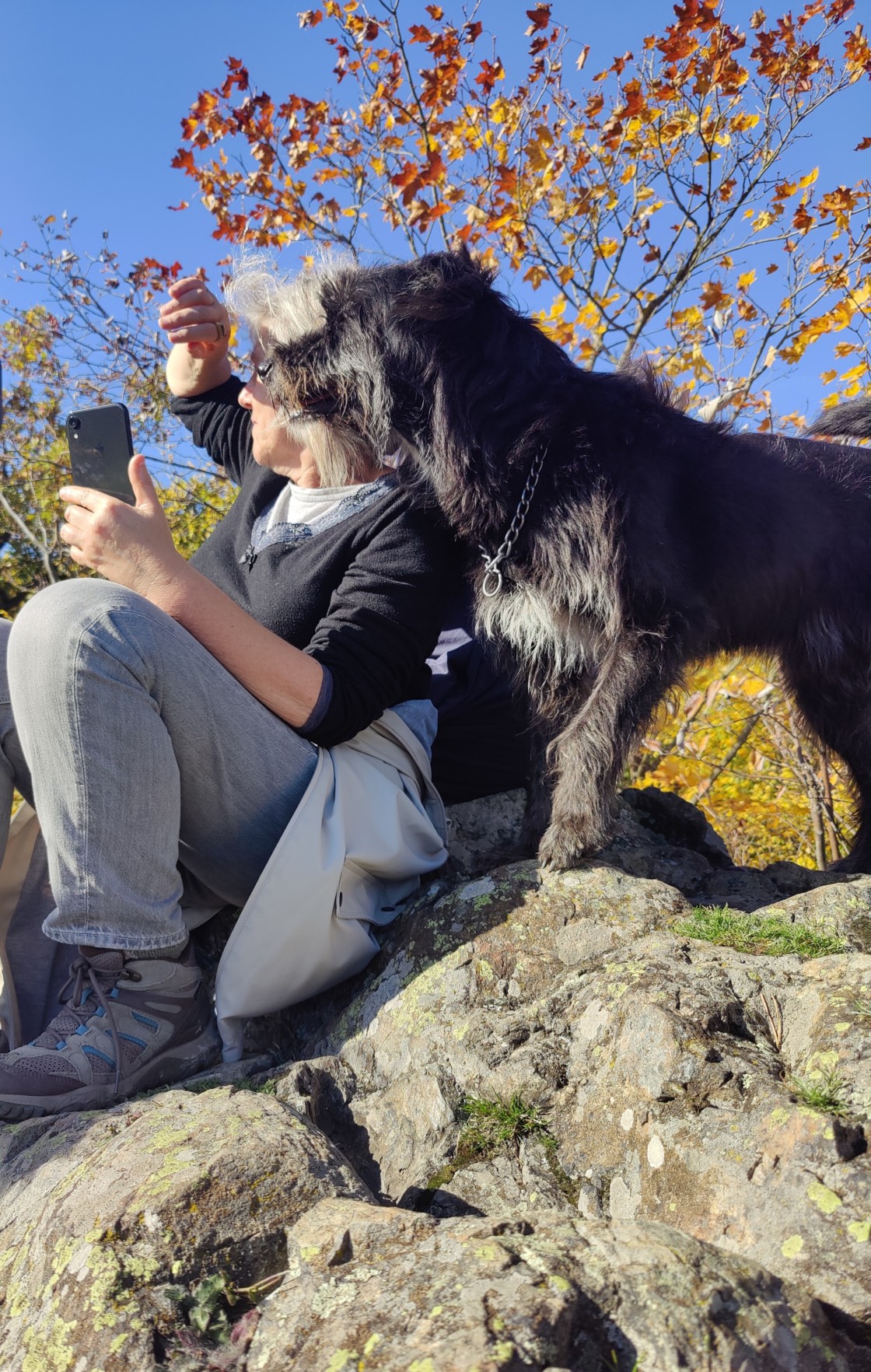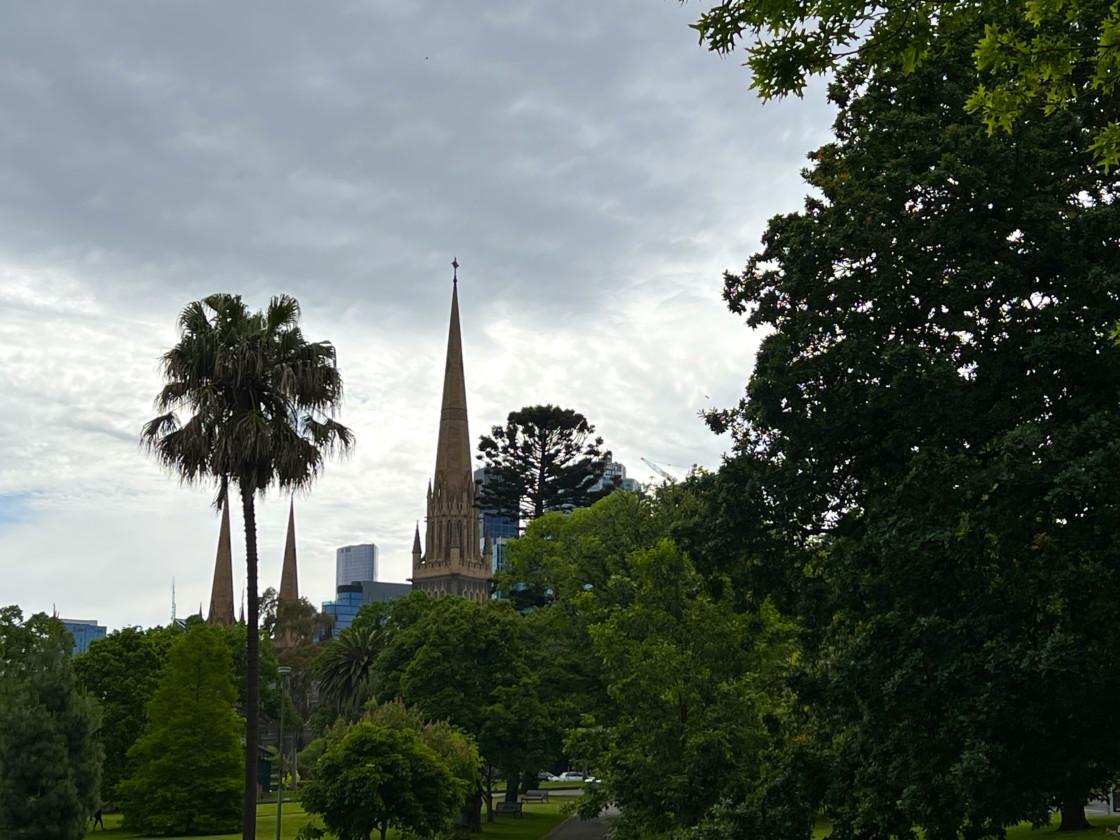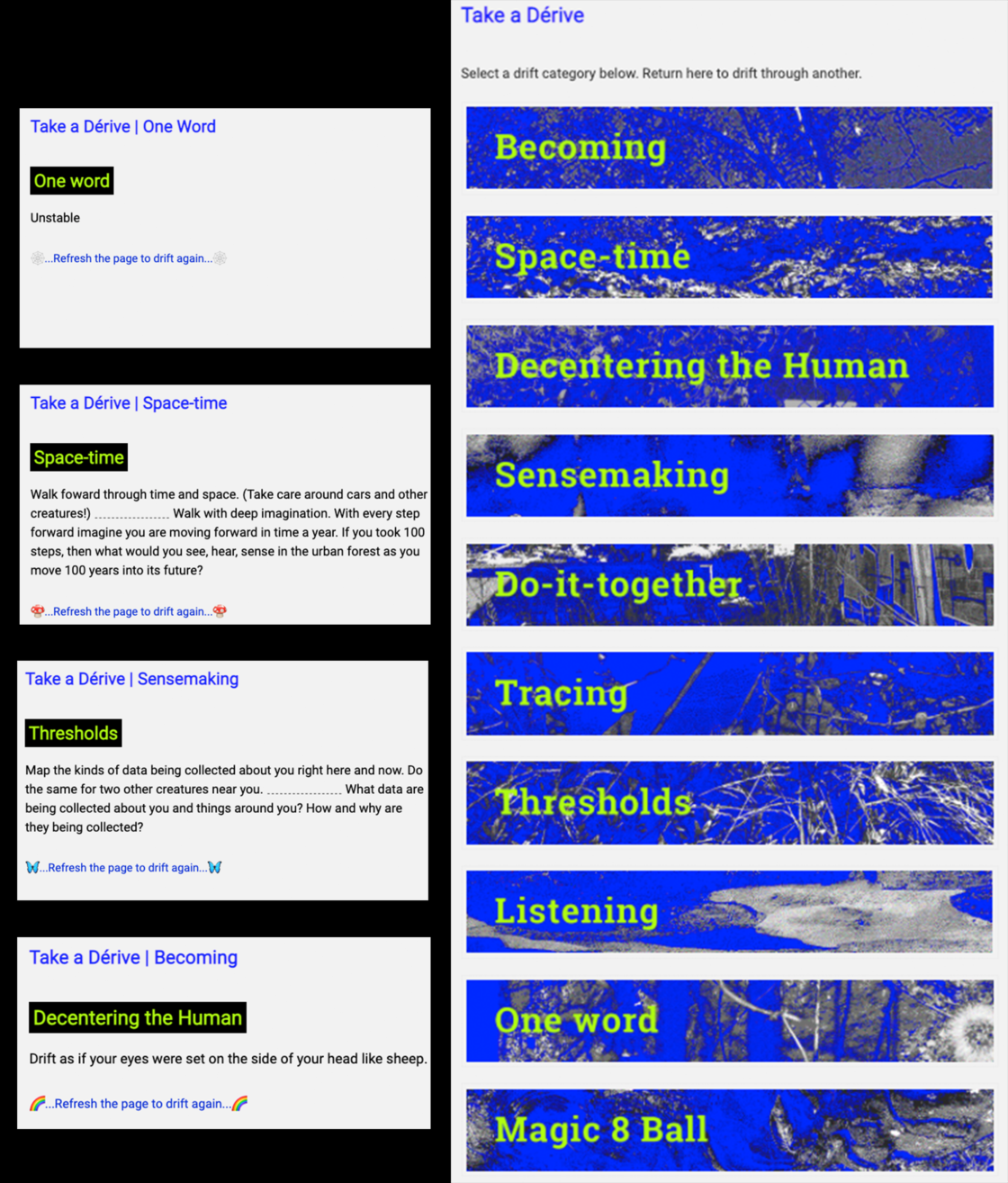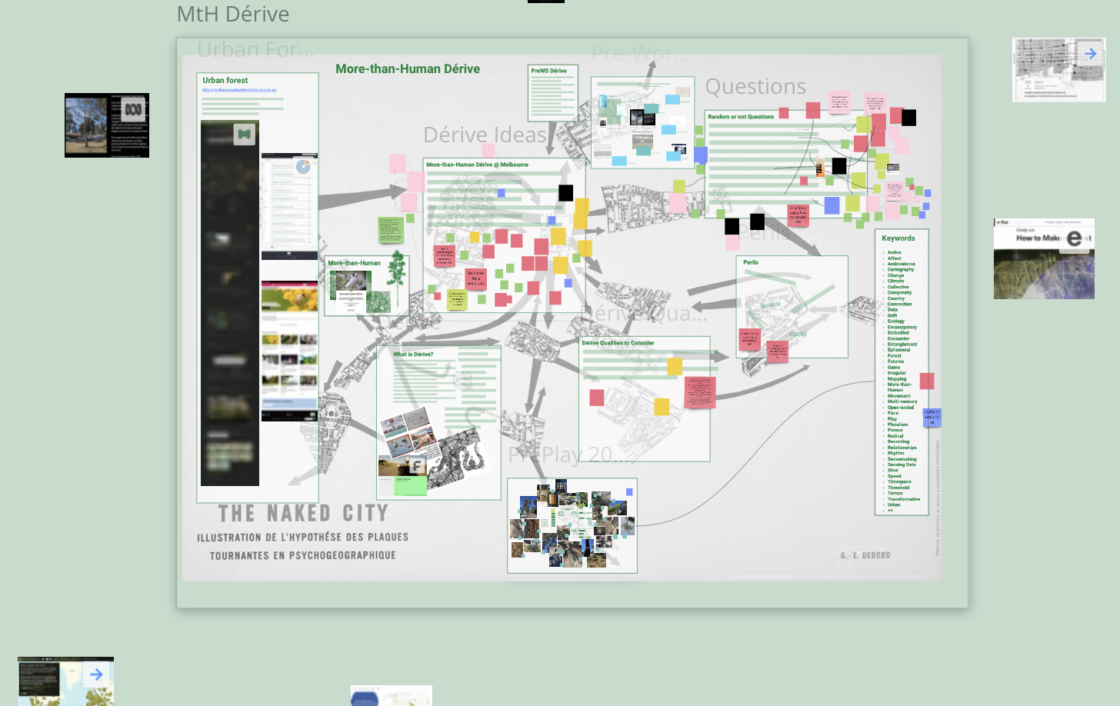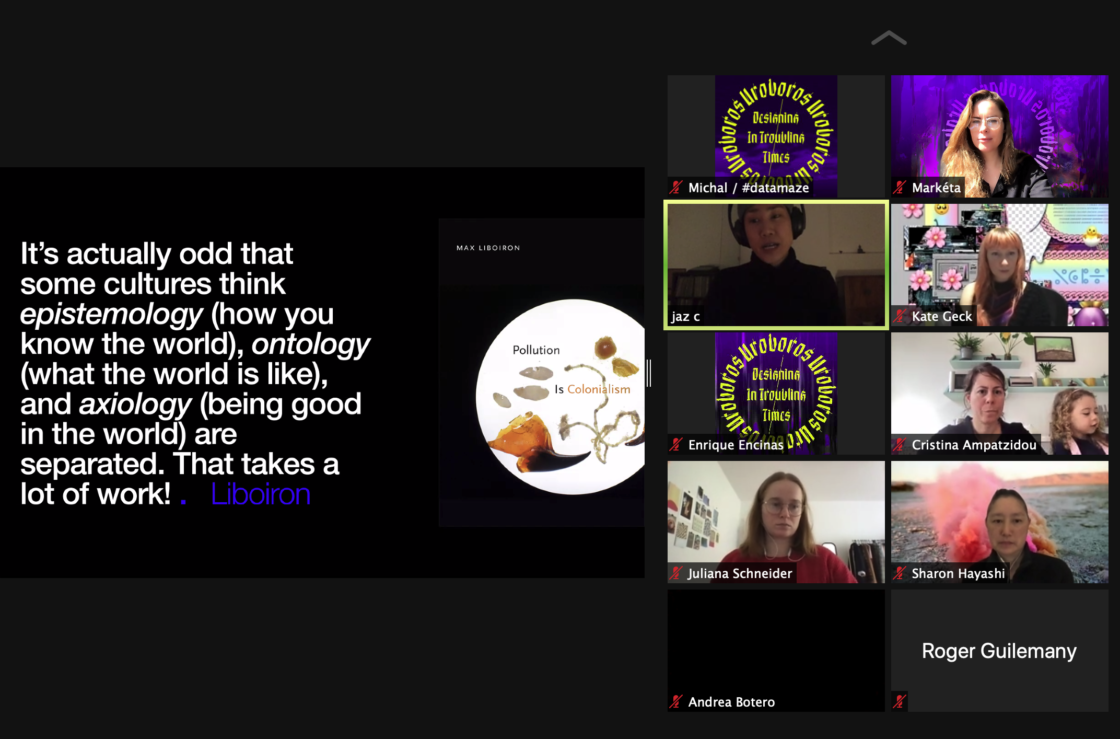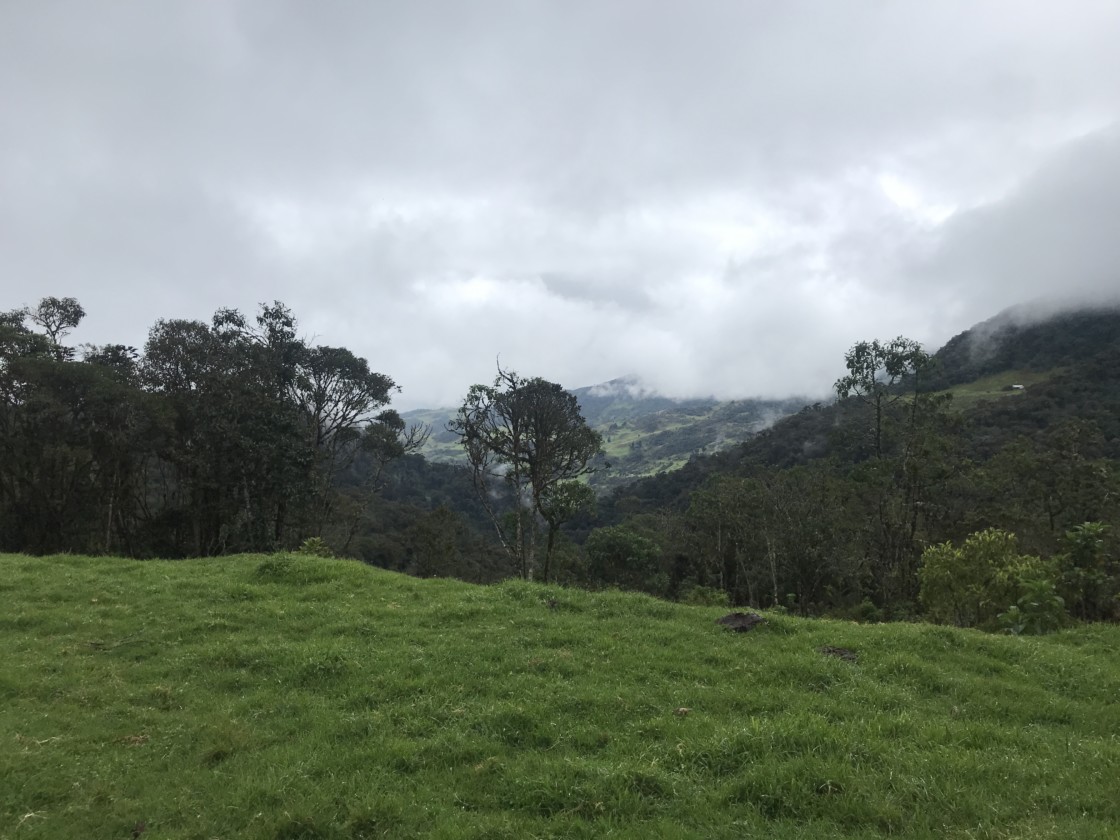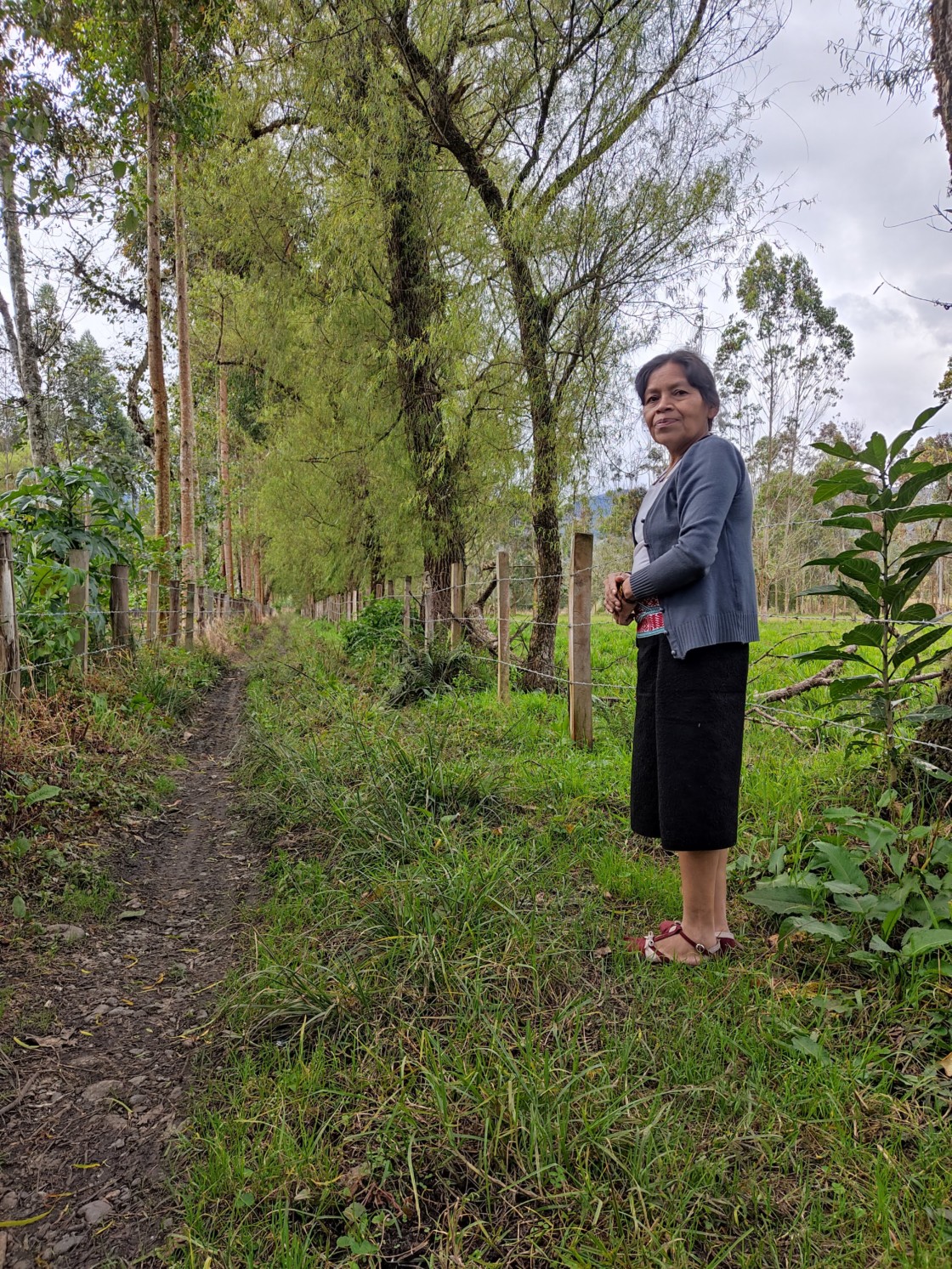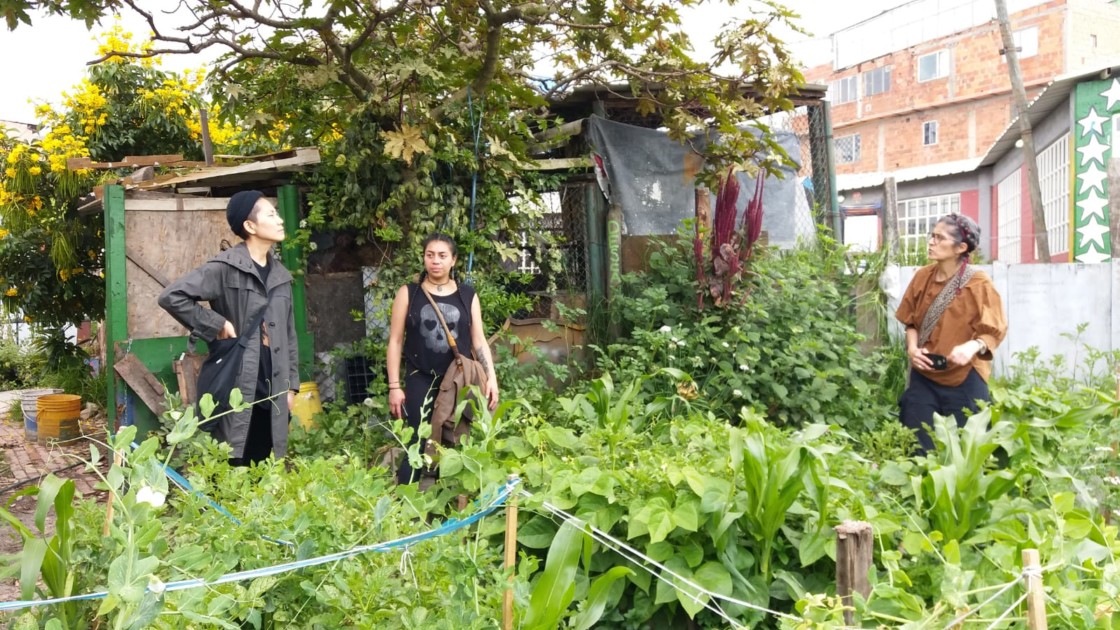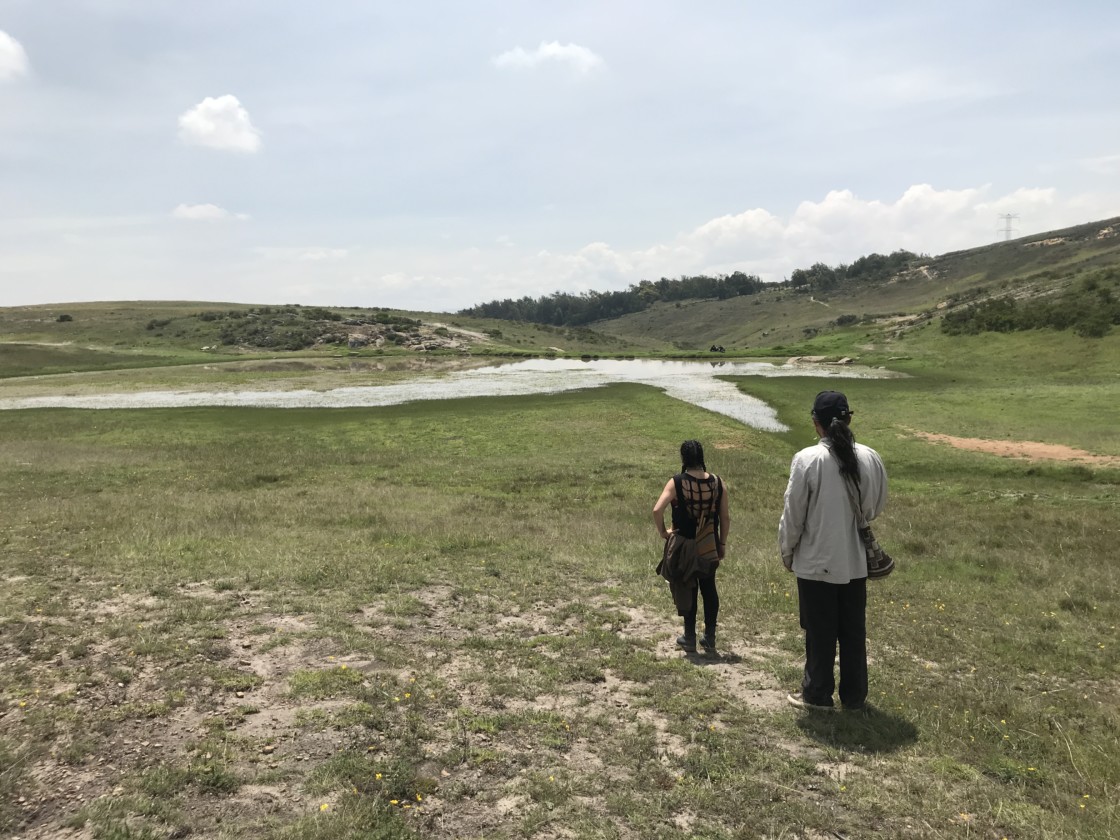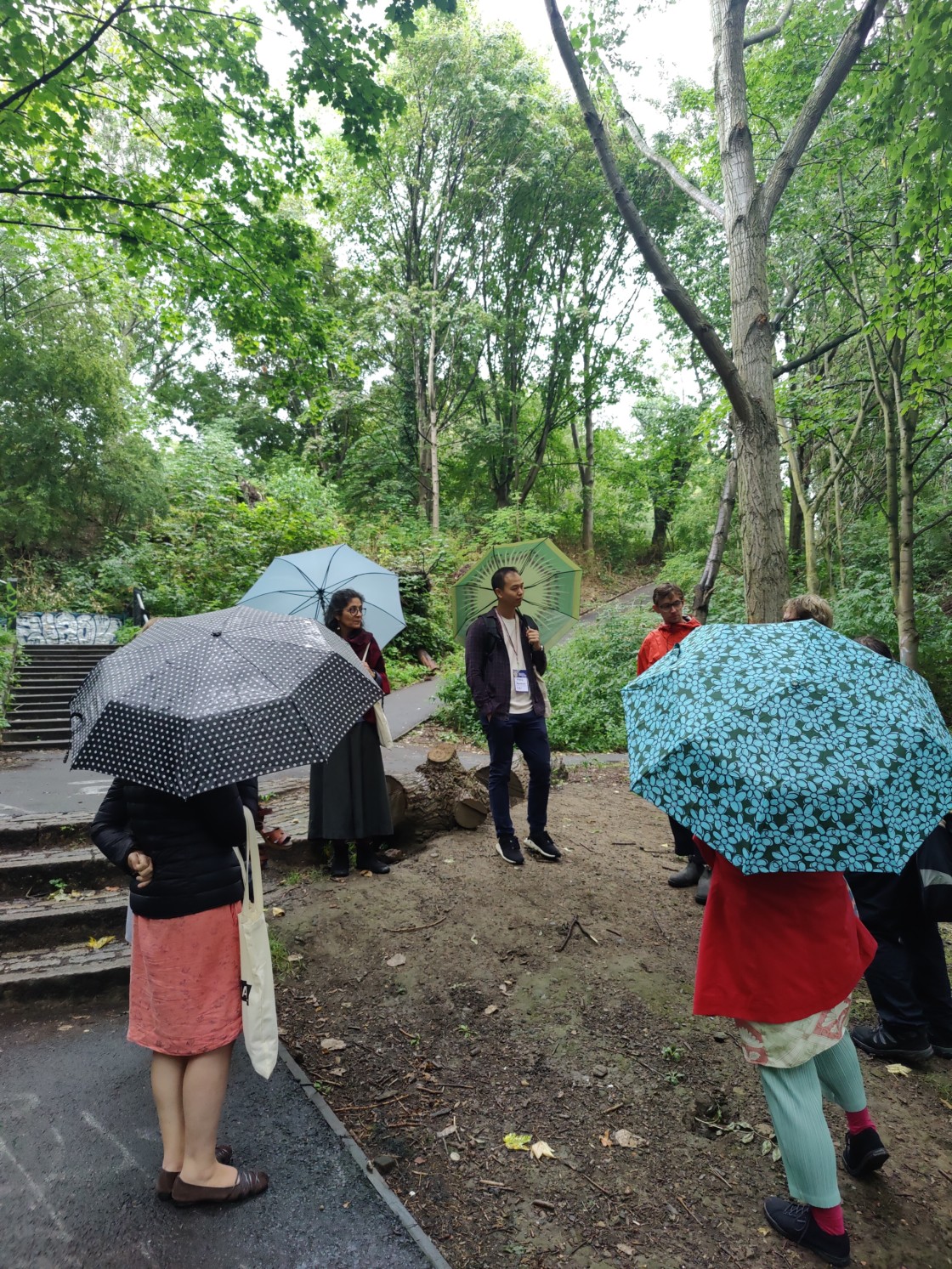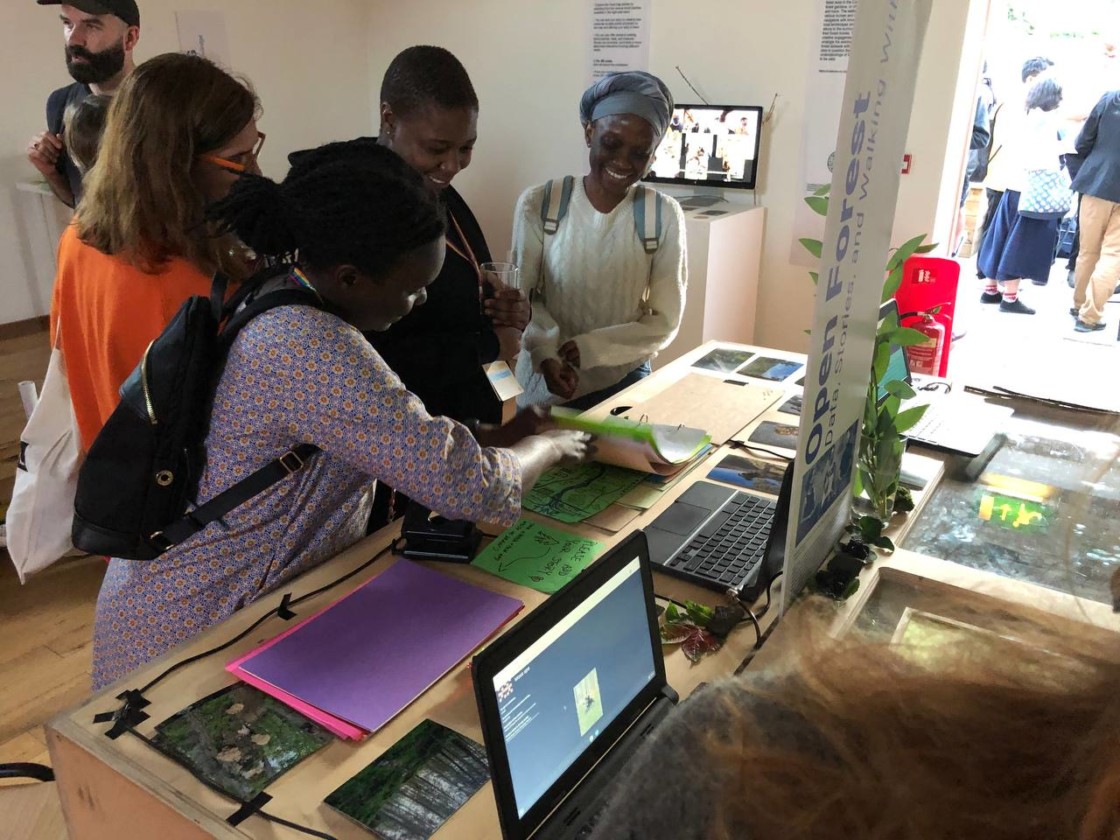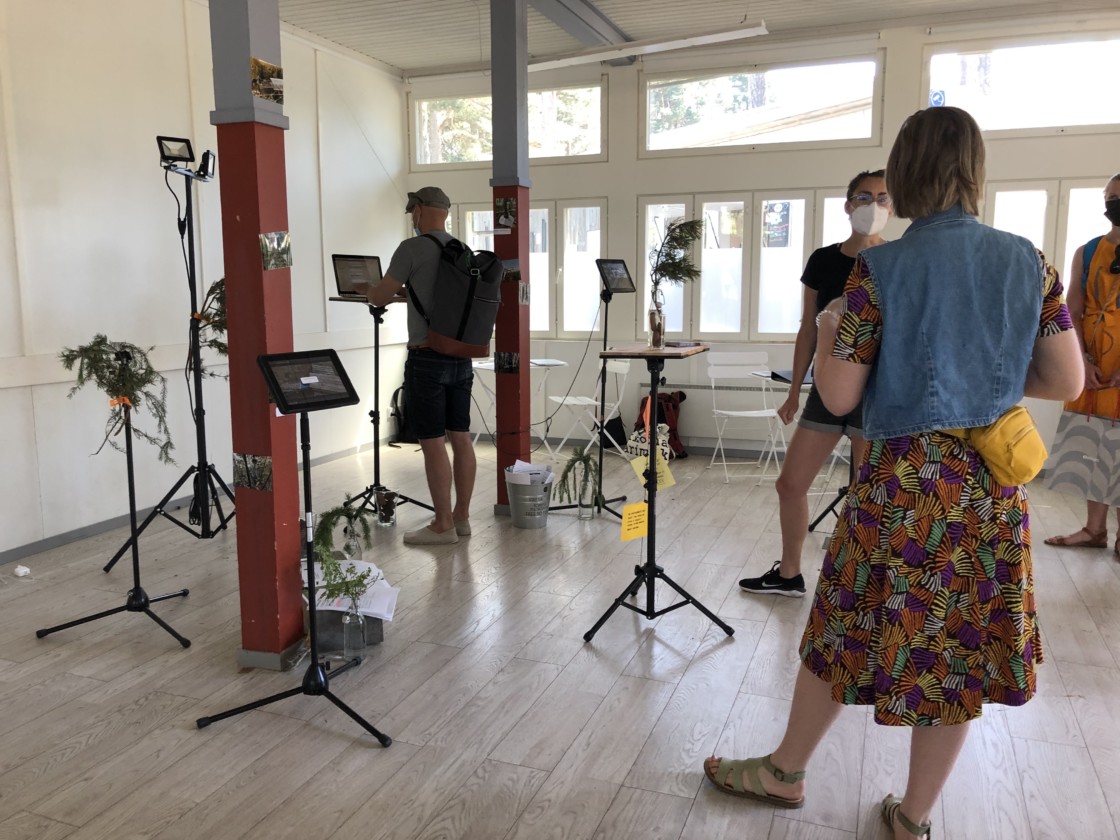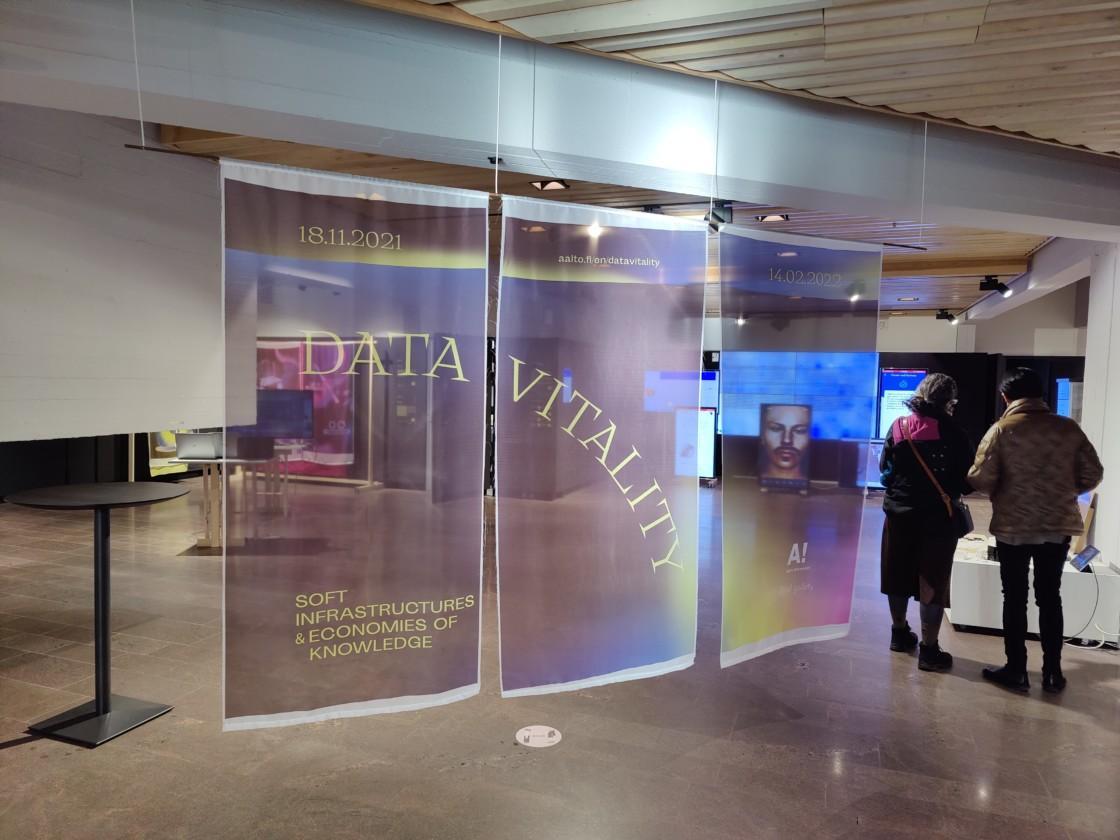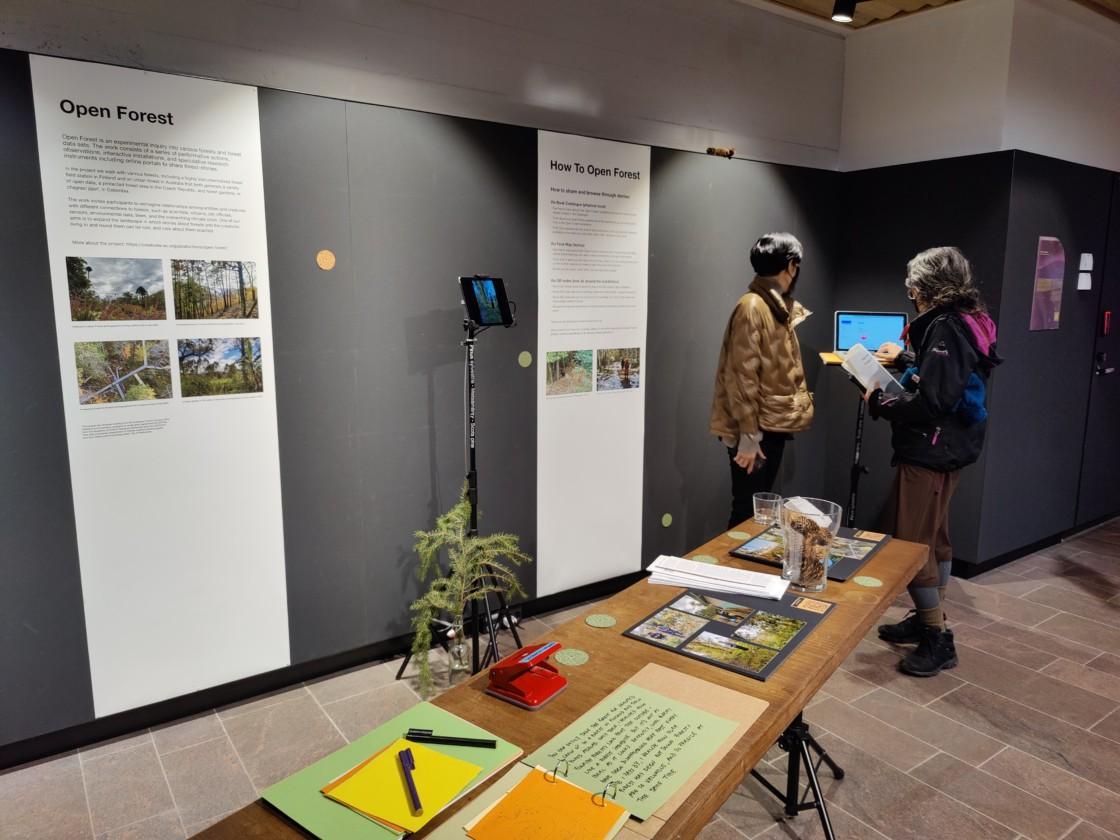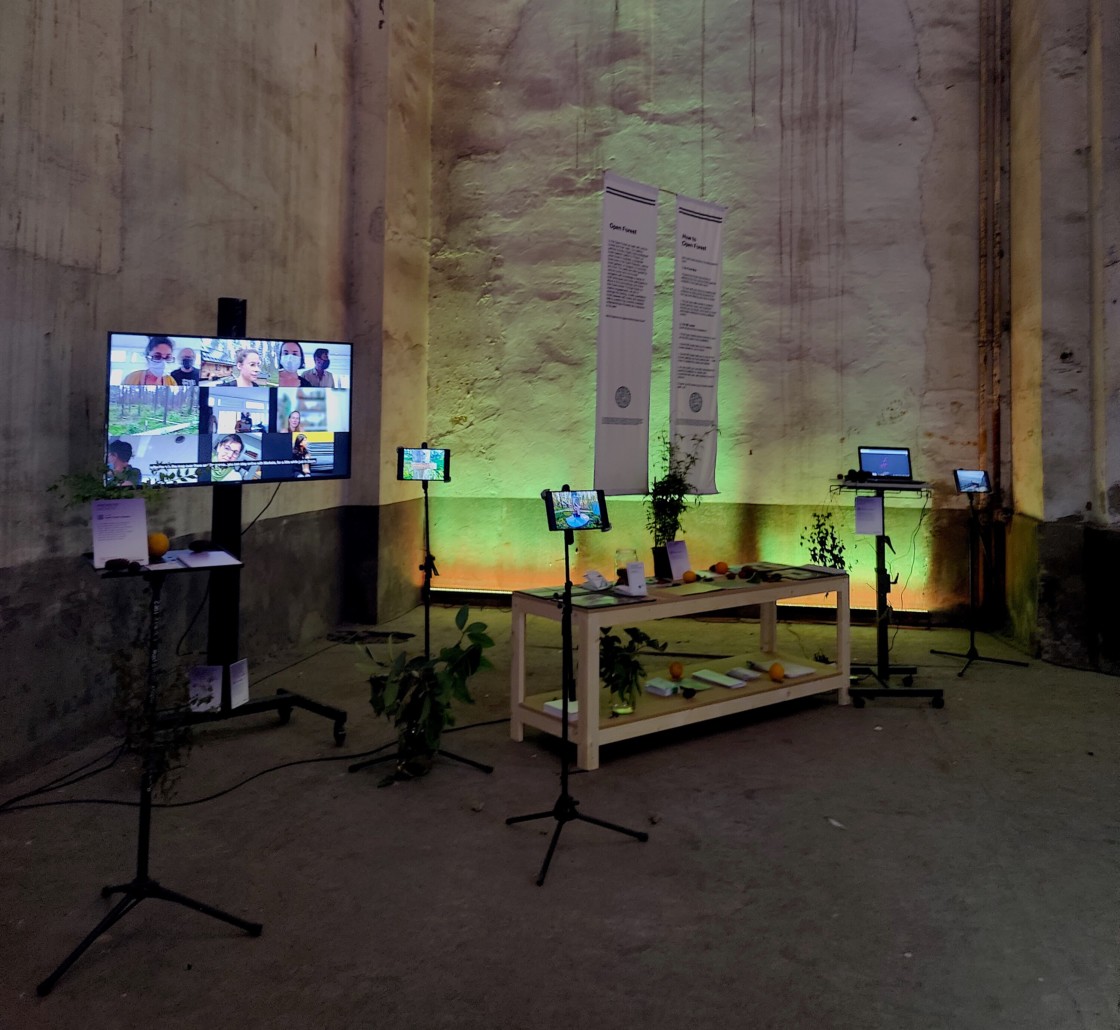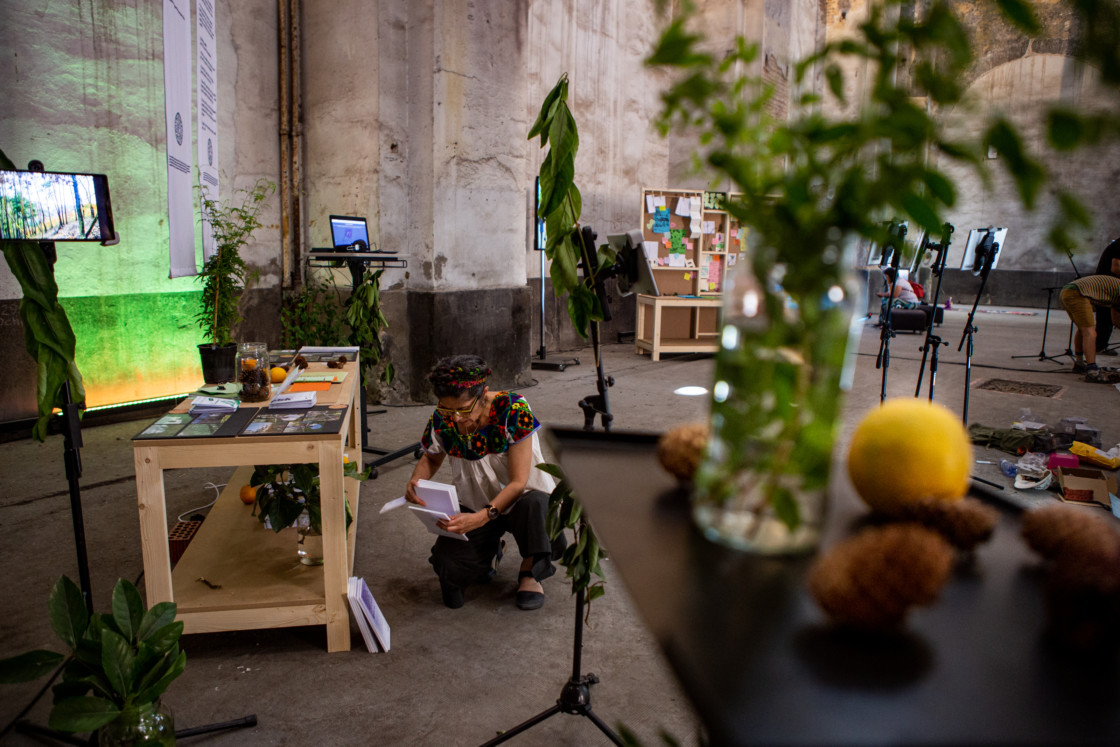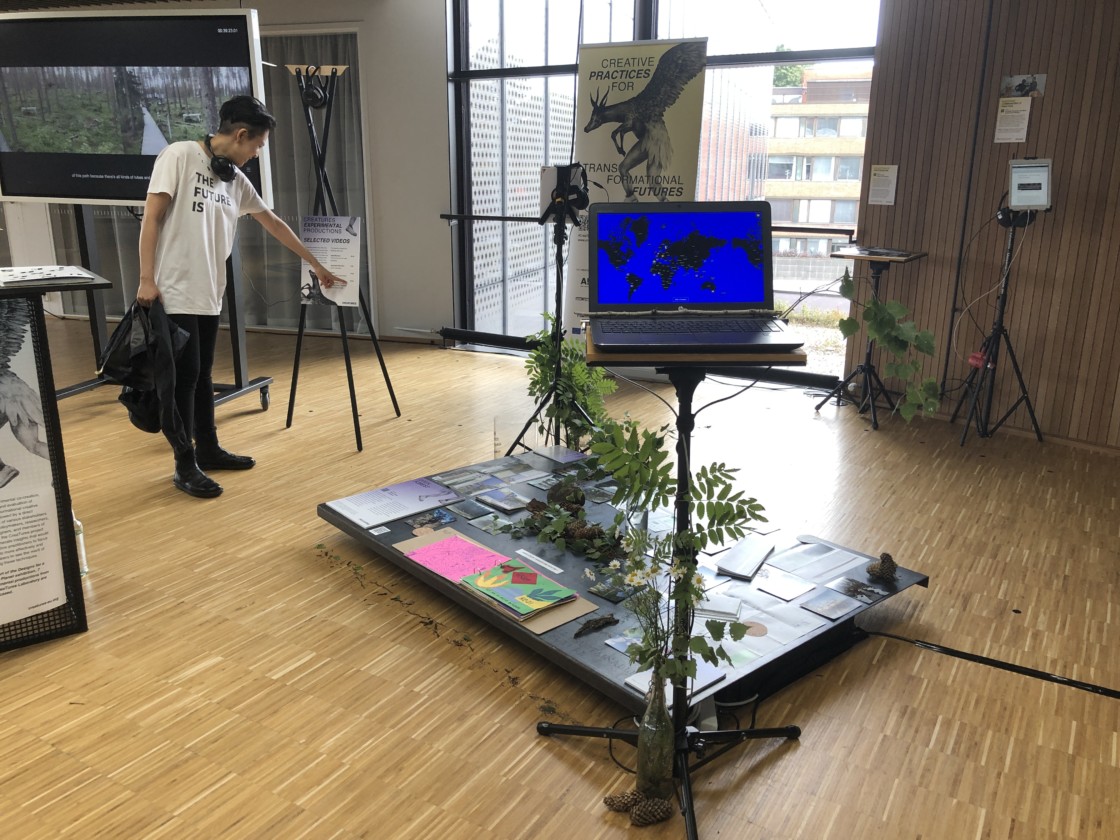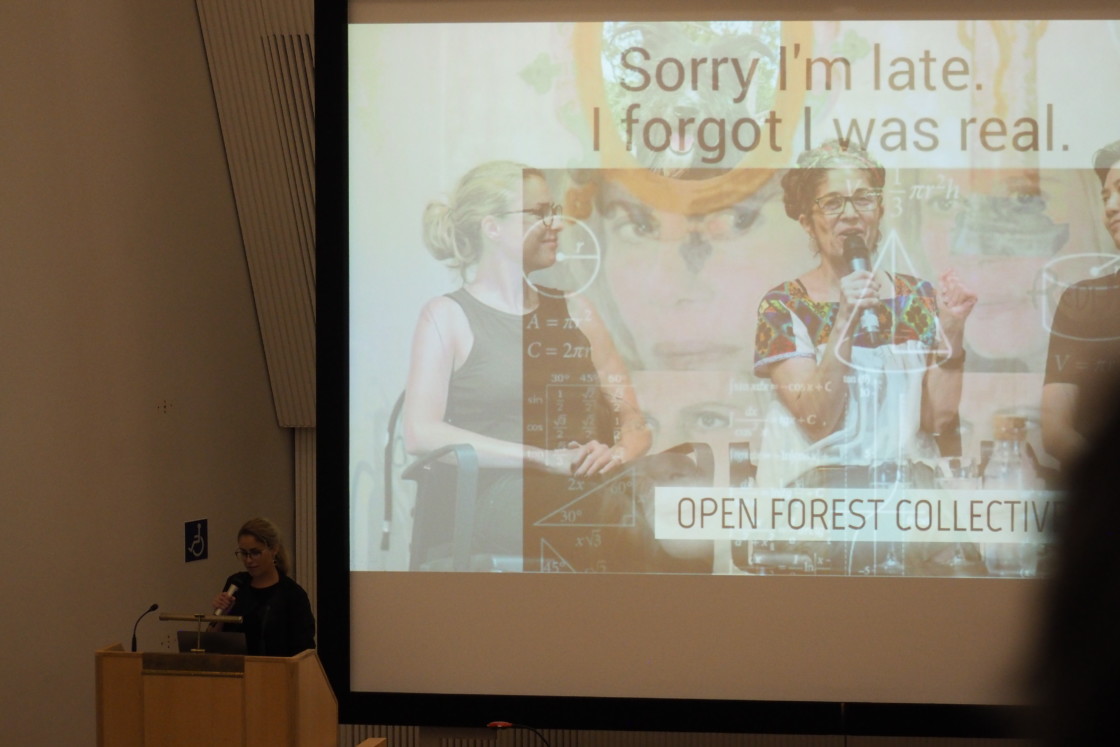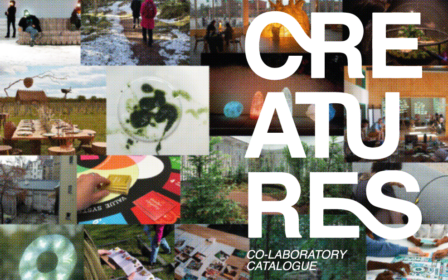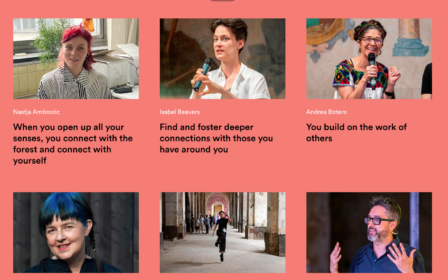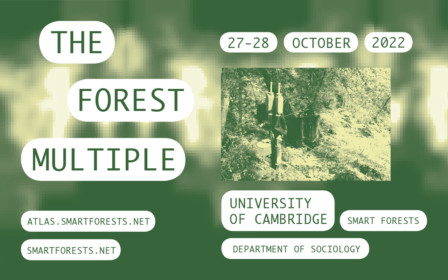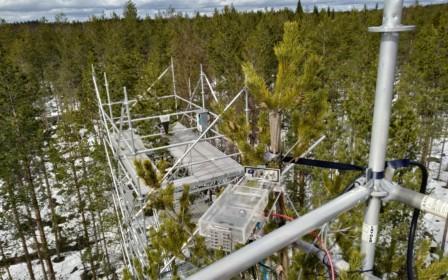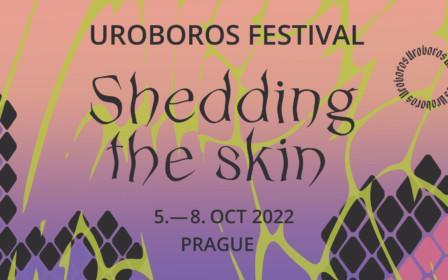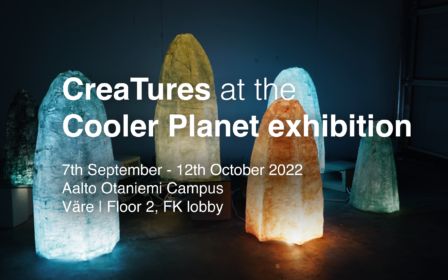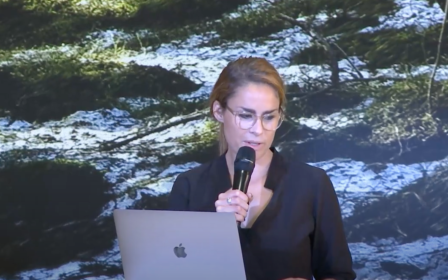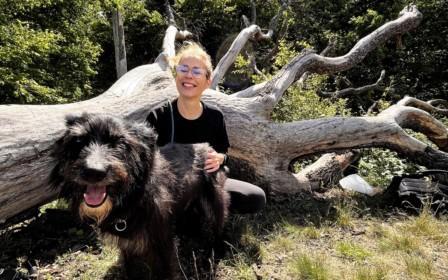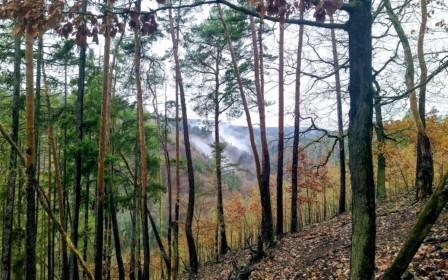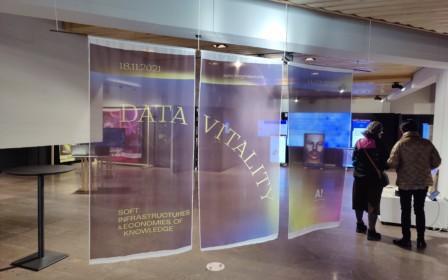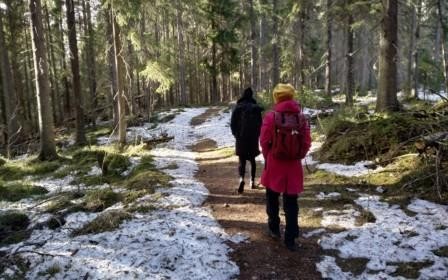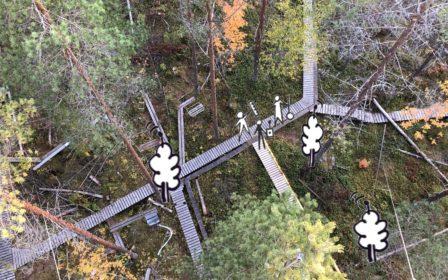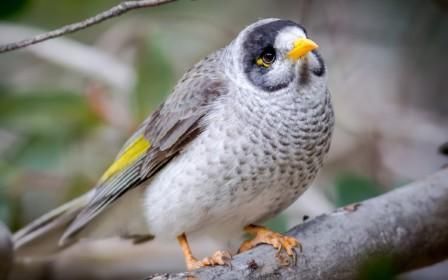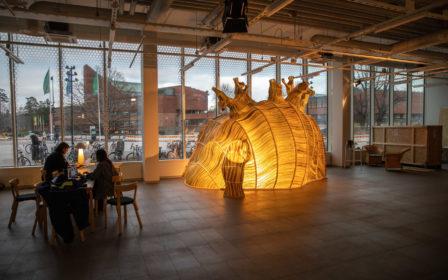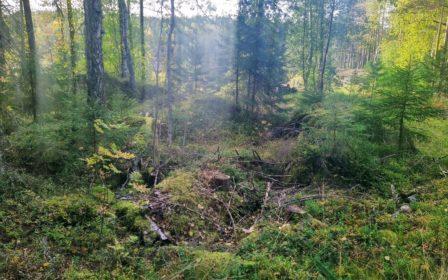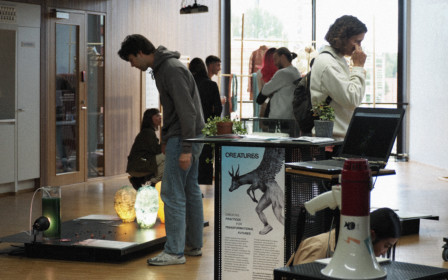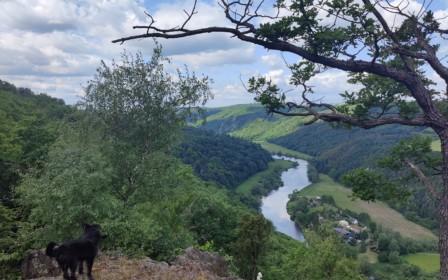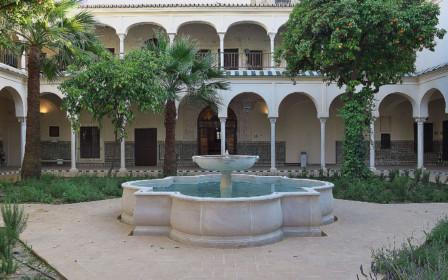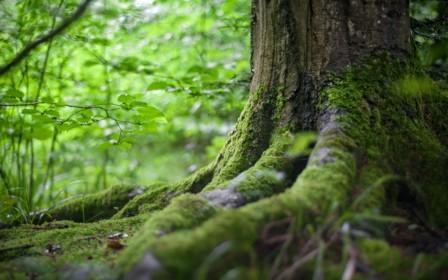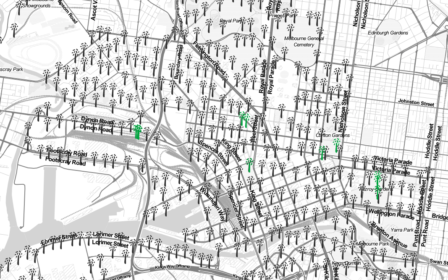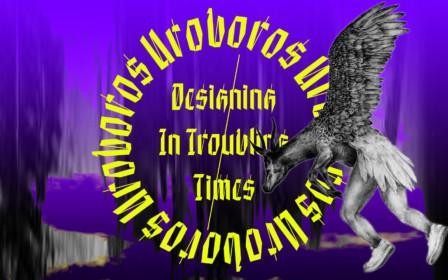Open Forest is an experimental research and practice-based inquiry into various forests and more-than-human dataflows. The project explores how forests and forest data can be thought of and engaged with otherwise, in feral, co-creative ways that consider perspectives of diverse forest creatures and reach beyond techno-solutionist, extractivist renderings of forests as resources. The creative work involves a series of experimental forest walks, interactive installations, and sharing circles inviting participants to walk-with various forest patches around the world and share their experiences as forest stories. Through these co-creative engagements, the Open Forest Collective aims to better understand how various stakeholders make sense of forests and forest data, questioning what can constitute a forest dataset, how it can be produced, and by whom.
As complex ecosystems, forests provide an environment for living and dying for many species: they are places of refuge, myths, folktales, and sensorial excitements but also sites for control and industrial extraction of natural materials. The modern, western traditions of forest management and environmental policies tend to see forests as a resource to be leveraged to improve human lives: for instance, through timber yields and stocks or carbon sink cultivation. Increasingly, and particularly in urban environments, forests are used to protect – not all but a small number of select – humans from perils of ecological disasters such as high temperature, ozone, and other health-related consequences. In these challenging times, there is an urgent need to better understand, care for and imagine better forest futures.
Open Forest aims to provide a space for co-creative engagements with such imaginaries, by inviting diverse forest creatures including forest dwellers, Indigenous forest guardians, healers, scientists, data managers, artists, designers, as well as dogs and trees, to walk together and share their forest stories. The experimental inquiry involves a series of feral, situated and interrelated activities that aim to entangle the currently available – mostly quantitative – forests datasets with more messy and eclectic more-than-human data.
Feral ways
The Open Forest inquiry is inspired by feral approaches to creative research practice, where feral broadly denotes the alternative, open-ended, spontaneous, more-than-human, unruly, and wild. In their Feral Atlas, Anna Tsing and colleagues use feral to describe, “a situation in which an entity, nurtured and transformed by a human-made infrastructural project, assumes a trajectory beyond human control.” Playing with the feral metaphor, Open Forest uses feral creative approaches to invite unexpected encounters that may unfold beyond full researchers’ control. These feral approaches connect creatures of diverse shapes, backgrounds and origins and bring them together into a convivial exchange that might result in surprising relations as well as unintended consequences. Emerging from such open-ended, unexplored, and ambivalent contexts, feral engagements carry the potential to shift existing power relations, reaching ‘beyond domestication’ and ‘beyond the Anthropocene’, and challenging dominant ontological and epistemological discourses. The Open Forest’s feral practice is navigated by diverse forest creatures who shape the co-creative activities and emerging more-than-human relations.
Experimental walking-with
Following feral approaches to creative inquiry, the Open Forest walks are performative, centred around the elements of surprise and curiosity. Since autumn 2020, the Collective has organised forest walks in various parts of the world, including (what is known today as) Finland, Australia, the Czech Republic, Colombia, and the United Kingdom. In each location, together with a growing number of collaborators, the Collective experiments with different walking formats and approaches: participants walk both physically and remotely, together and apart, sometimes with actual forests and sometimes through data-based representations of them. Local trees and other forest creatures are considered participants, in both the walking and the larger eco-social phenomena happening in and around forests, such as mass extinction and climate change.
This relational walking-with follows various types of ‘maps’ with diverse points of interest and is guided by various human and non-human navigators with good knowledge or sense of local landscapes. Some walking guides share narrated trivia about the local forest area; its culture, species and history, which then serve as key points of the walking route. Other guides use their own sensory instincts and invite participants to follow without any predefined route. Following these diverse walking formats and guidance, each Open Forest walk revealed previously unknown aspects of a local landscape and its creatures, including trees, moss and carbon sequestration sensors. The walks create a space for experiential learning about various forests, shifting the focus toward knowledge shared by diverse walkers.
Feral Map of forest stories
While walking, participants observe, smell, touch, taste, and listen carefully to their surroundings; they take pictures and notes and talk to each other. These conversations and observations become an inspiration for forest stories, which are shared via the online Feral Map. The map serves as a growing public archive of collected forest stories, making the walking experiences available for further reflection and asynchronous engagement.
The Feral Map stories come in diverse formats and shapes. Some are personal accounts of human-forest relationships expressed in words and pictures, others are numeric datasets capturing, for instance, an exchange of volatile organic compounds between a forest and the atmosphere.
The initial version of the Map drew upon Urban Forest open data maintained by the City of Melbourne and later grew to include tree datasets from multiple forest areas around the world. Each forest patch where the Collective organises their walks is added to the map as a new location to share forest stories. However, map contributions are not limited to the walked-with patches only, and a story can also be added anywhere outside of these locations. Anyone, not only participants at the walks, can share their stories, thus contributing to an evolving dataset of situated forest experiences and impressions.
As a feral artefact, the map invites inputs and interactions beyond the scope of the Open Forest project. Aside from the walked-with forest patches, the map hosts various venues and creatures coming from other, similar creative inquiries – such as the Open Urban Forest garden and the Nocturne altars. The map can also support various activist and everyday-life endeavours: for instance, the waking guides in Colombia have been interested in using it to further disseminate their local activist, biodiversity preservation efforts.
The Open Forest Catalogue – a physical book presented at Open Forest exhibitions, workshops and other public events also allows for the sharing of stories. From the Feral Map and Catalogue, collected stories (over 100 in total so far) serve as forest data, capturing situated experiences and perspectives of forest stakeholders coming from diverse geographical, cultural, professional as well as biological backgrounds. This evolving, ‘messy’ Open Forest dataset can help raise questions about power, values, and structural inequalities that shape forests and their futures and, by extension, help us to make better sense of complex eco-social phenomena such as climate change.
Walking locations and forest patches
In Finland, the walks have (since September 2020) been situated in the SMEAR II – Station for Measuring Ecosystem-Atmosphere Relations in the historical Hyytiälä forestry field station in Juupajoki and in the Sipoonkorpi National Park near Helsinki. The walks in Hyytiälä have been performed under the guidance of two Collective members who previously interviewed several forestry researchers and data scientists working at the station to learn about its history and the research performed there over the past 30 years.
While walking through the highly instrumentalised SMEAR II forest, the guides share these anecdotes, showing details of sensors and other research instruments that gather data about various exchanges between trees, soil, and the atmosphere. Walkers are invited to reflect on what these forest exchanges can mean to whom, imagining, for instance, what did the cloud whisper to the forest canopy?
One Finland-based walk took place in the Sipoonkorpi National Park in October 202 and followed the guidance of local forest healers from the Terveysmetsä (Health Forest) initiative. The hybrid walk invited participants to join experimental forest activities such as plunging their faces into the moss floor, observing local forest creatures with a magnifying glass, foraging for herbal tea ingredients, and offering gifts to the forest. The aim with these activities is to get a more intimate knowledge of the local multi-species ecosystem.
In the Czech Republic, an ongoing series of walks initiated in July 2021 takes place in Central Bohemia, in the protected landscape area Křivoklátsko, which presents a unique ecosystem with a mosaic of species-rich habitats.
The Bohemian guide Chewie, a Collective’s member of canine origin, navigates the walks while following his extensive sensorial knowledge of the local forest landscape: walkers need to trust Chewie’s sense of direction and wait for what will come their way. This feral walking approach can appear, to a human researcher, without any purpose to arrive at somewhere specific – the experience of drifting through the forest becomes the goal in itself. Yet, the more-than-human guidance opens a space for new, surprising experiences, inviting the walkers to explore forest spaces and situations that they might never discover otherwise. It can help reveal what can we learn as humans if we give up on our control over our daily space-time movements and try to attune to a rhythm and interests of a local non-human creature.
Staring in July 2021, the Bohemian walks have been performed as an ongoing series (over 50 walks so far). A special walking event Walking with Feral Forests, Creatures, Stories took place at the Uroboros 2022 festival, where Chewie guided a group of festival participants through some of the Křivoklátsko paths and helped to provoke a co-creation of forest stories.
In Australia, the walks took place in the Melbourne urban forest – a complex ecosystem of more than 70,000 trees each with unique IDs that provides a peculiar context for inquiry into open and alternative forest data.
The Melbourne walks (May 2021) were guided by a set of dérives, developed through three co-creative workshops with participants of diverse backgrounds, and inspired by the Situationist International’s dérive strategies. The Collective incorporated these into their More-than-Human Dérive portal that explores new ways of sensing and mapping of local landscapes using expanded, multisensory ideas of data to include diverse more-than-human ‘voices’ and perspectives.
The first dérive drift through the Melbourne urban forest took place in May 2021 at the Melbourne Knowledge Week; the second one happened at the online Uroboros 2021 festival and invited participants to drift remotely, via the portal.
In Colombia, the Collective walked with forest patches in three different locations, including the Bëngbe Uáman Tabanoc – an ancestral territory of the Kamëntŝa people located in southern Colombian Andes, the Reserva El Palmar – an ecological reserve located in the buffer zone of the Chingaza National Park in the Andean Mountains, and the Cerro Seco – an informal housing neighborhood located at the southern urban limits of Bogota (December 2021 – June 2022).
In Tabanoc, the walks (December 2021) were focused on local forest gardens, or chagras, and guided by Kamëntŝa women who tend the gardens as part of their common, day-to-day life. The chagras, planted and maintained according to the traditional Kamëntŝa ecological knowledge, served as a walking map: what grew there at the time defined the key points of the walking routes. During the walks, participants learned how vastly different the Kamëntŝa approach to forest caretaking is from the modern, western forest management strategies that rely on high-tech sensing and quantified data measures (as encountered e.g. in the SMEAR II walks).
In Reserva el Palmar, two walks (May 2022) were organised with students from the Universidad de los Andes and guided by Jaime and Cristina Avellaneda, local eco-tourism service founders who drew the walkers’ attention to the local páramo ecosystem and its history marked by extractivist industrial development and bio-conservation issues. Following the walks, the participating students engaged in a dérive drift to get a better sense of the local environment and captured their experiences as forest stories.
The Open Forest walk in Cerro Seco (June 2022) followed two activists from a local initiative drawing attention to illegal extractivist mining processes and land degradation happening in the area. Participants explored the local environment, which hosts one of the few relics of sub-xerophytic and high-altitude dry tropical forests as well as numerous sand mines. While walking, they learned about the complicated political history of the area and present bio-conservation struggles and shared their impressions via the Feral Map. The guides have been interested in using the Map to further disseminate their efforts to stop illegal extractivist mining processes in the area and reach a broader scope of audiences, beyond the local area.
Two hybrid walks were organised in the Ouseburn Valley in Newcaste (UK) as part of the Participatory Design 2022 conference Situated Actions program (August 2022). The Collective members acted as guides and walked the conference participants through the Ouseburn forest patch, sharing trivia about the local history as well as their personal experiences with various forests around the world. Participants were invited to bring their boundary objects representing what a forest means to them and share the stories behind the objects with others.
Open Forest Installation
The Collective set up an interactive installation as another entryway to engage with the project that has been showcased at various public events. The first iteration was planted in an abandoned retail space A Bloc (Espoo, Finland), as part of a collaboration with the Baltic Sea Lab project. Here the Collective worked for six months (November 2020 – April 2021) and interviewed various forest stakeholders including forestry researchers, tree physiologists, artists, and forest data managers about their relationships with forests. The installation was further showcased at various exhibitions and festivals, including the Research Pavilion #4 Helsinki (June 2021) where it accompanied two guided walks with the SMEAR II station in Hyytiälä.
In November 2021 – February 2022, some insights from the unfolding Open Forest inquiry were showcased at the Data Vitality exhibition organised at the Dipoli Gallery, Aalto University.
In June 2022, the Open Forest installation was planted at the CreaTures Festival in Seville, Spain; followed by the Helsinki Design Week 2022 – Designs for Cooler Planet showcase in Espoo, Finland (September – October 2022).
The project Open Forest is ongoing and it keeps walking – see the News section below for upcoming walks as well as documentation of past events.
